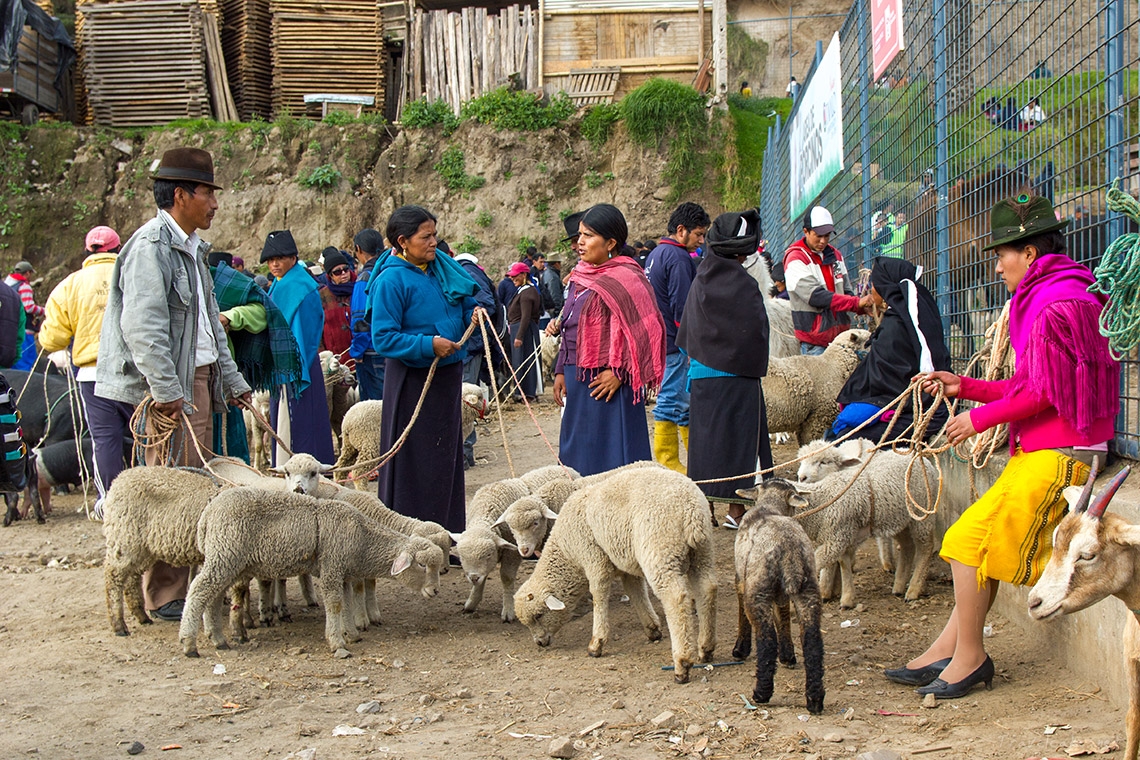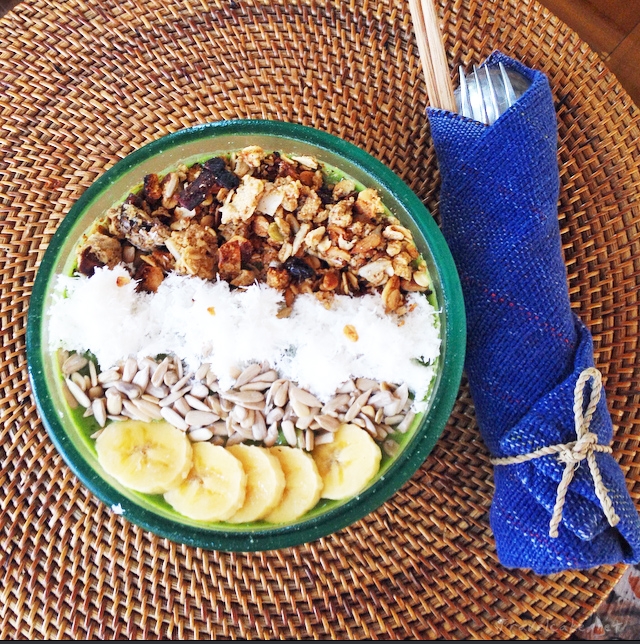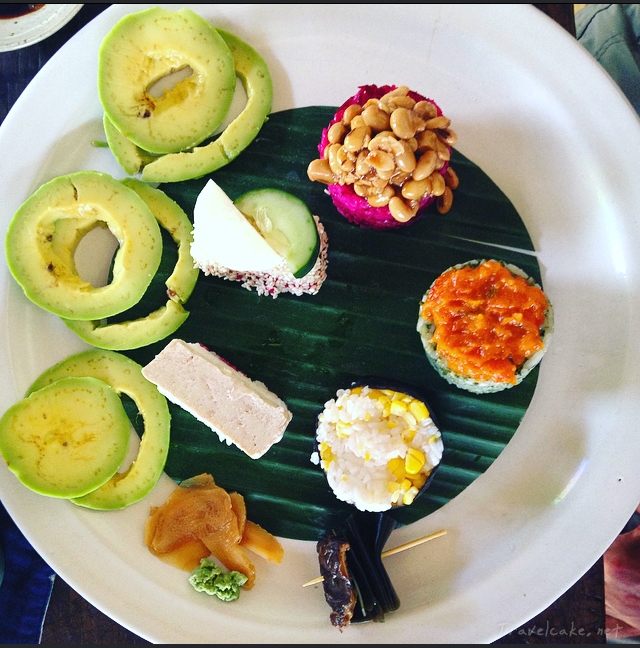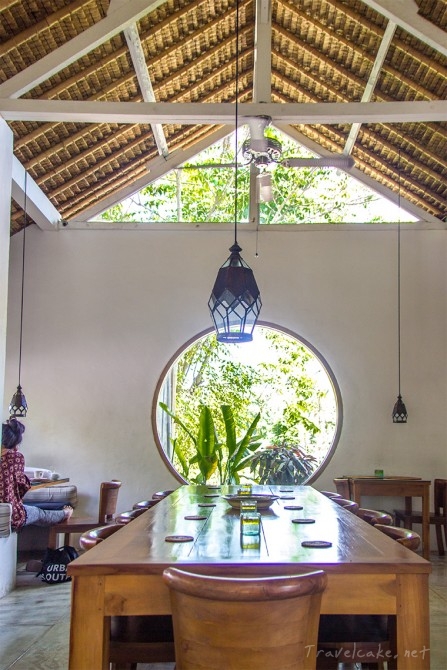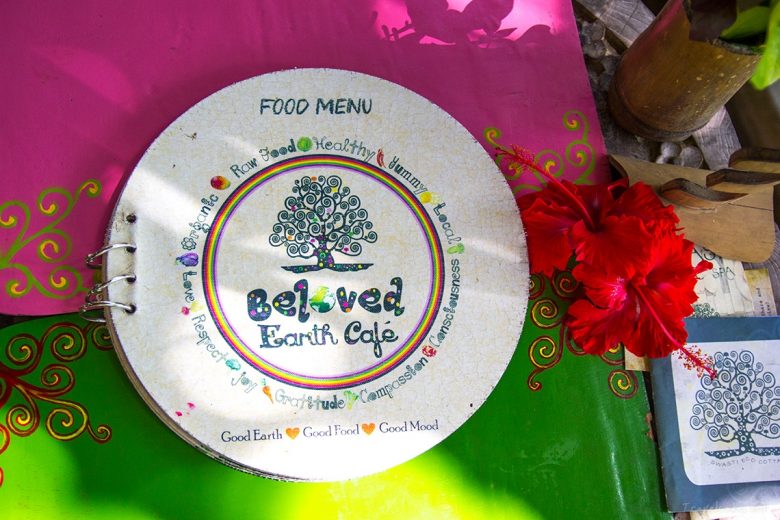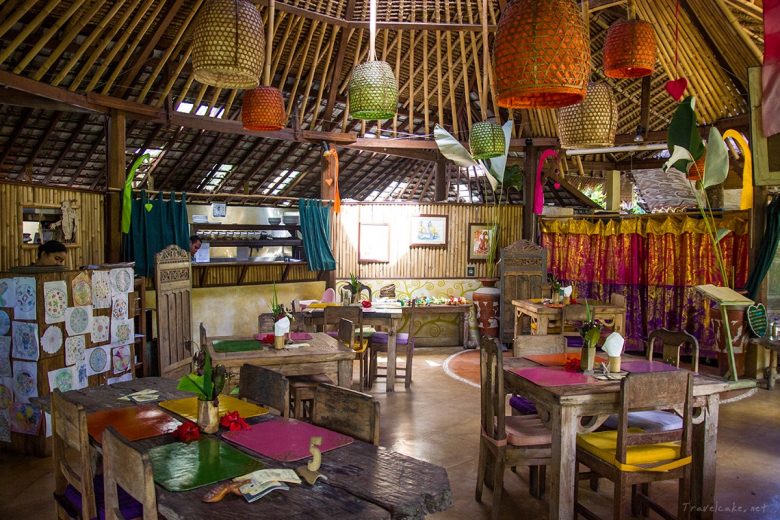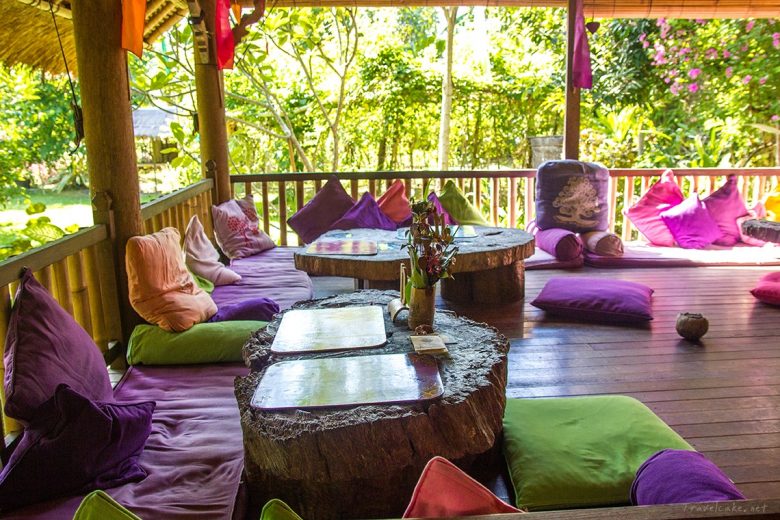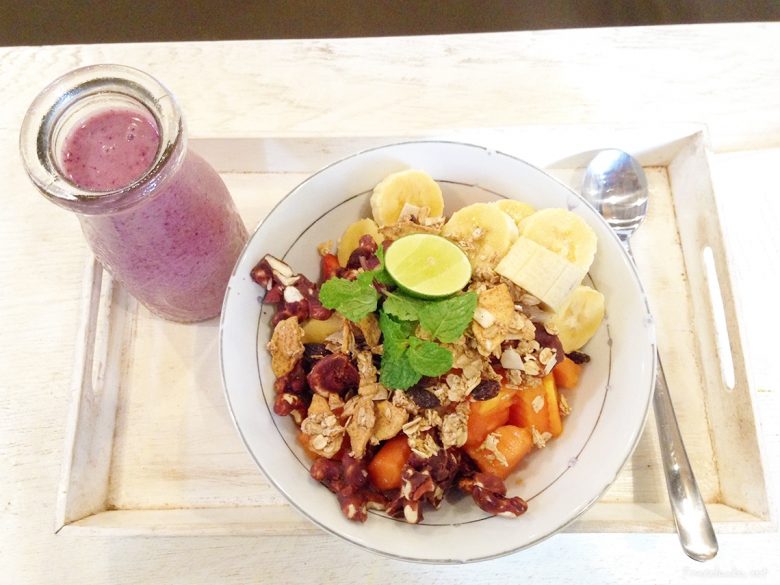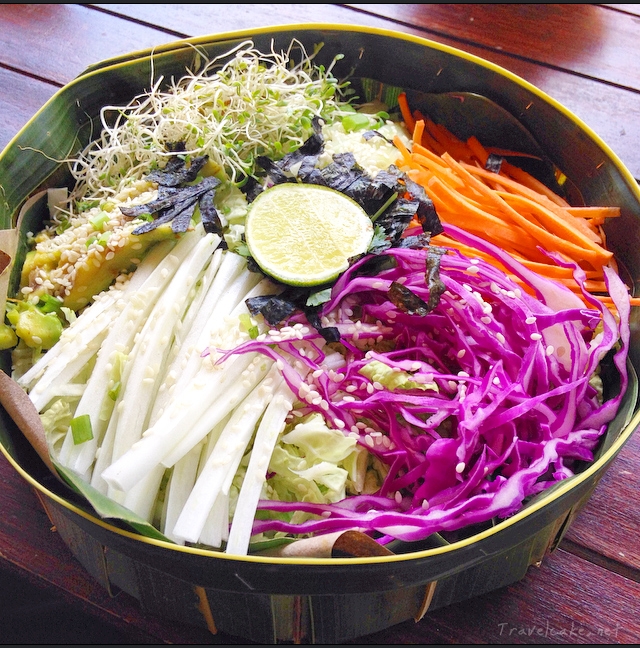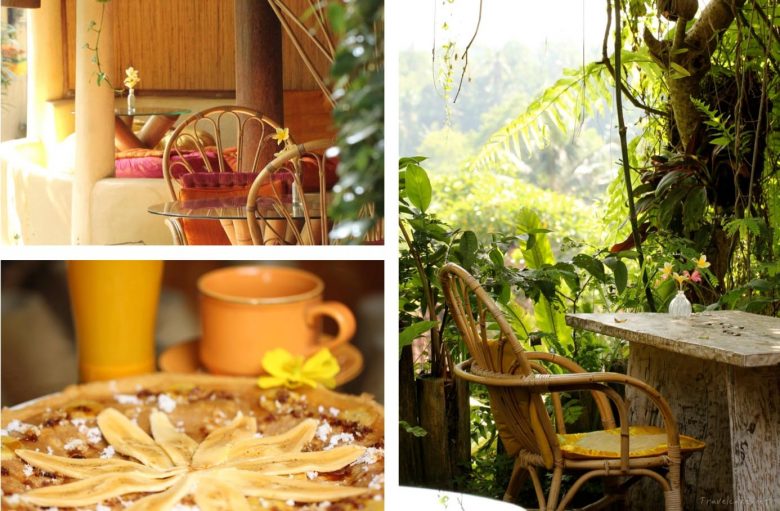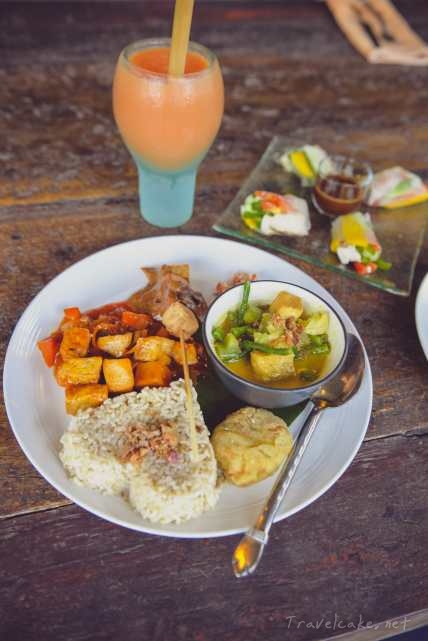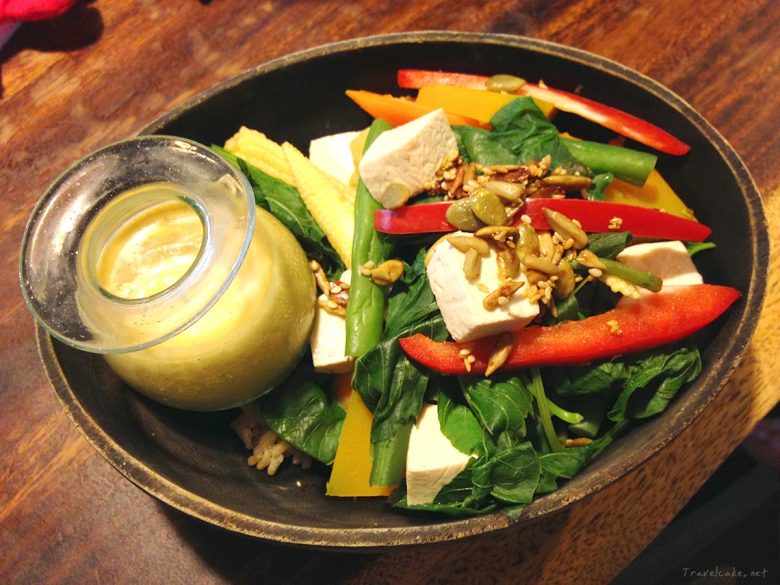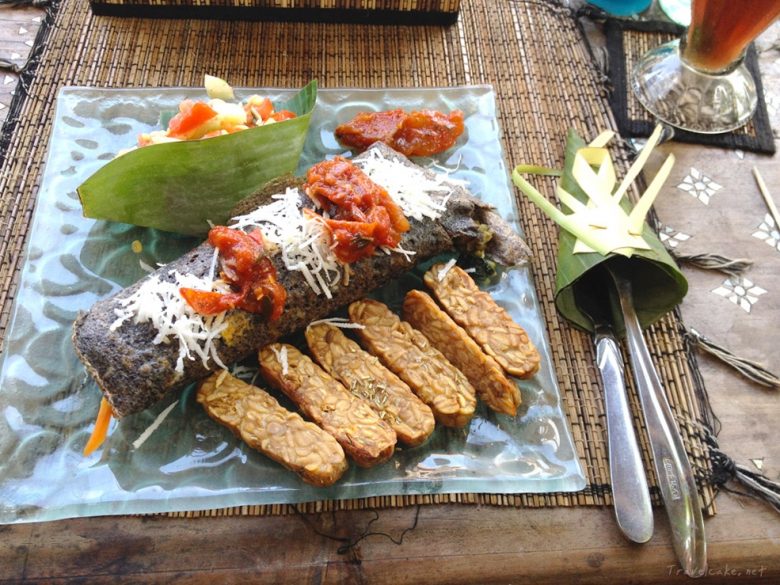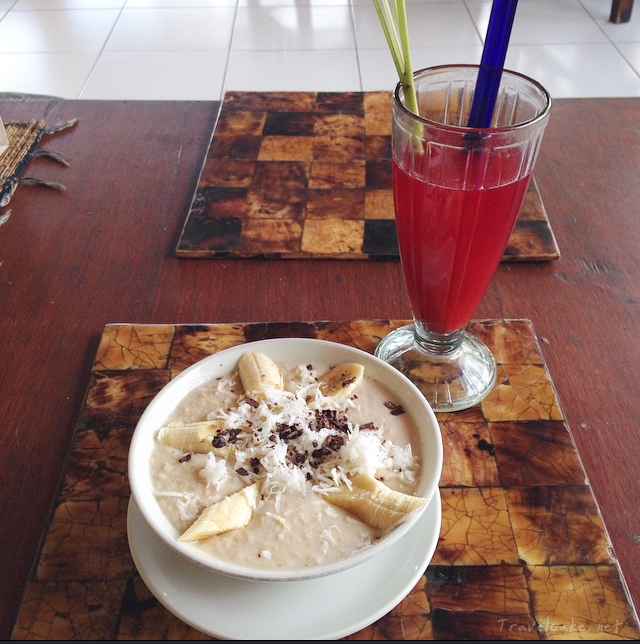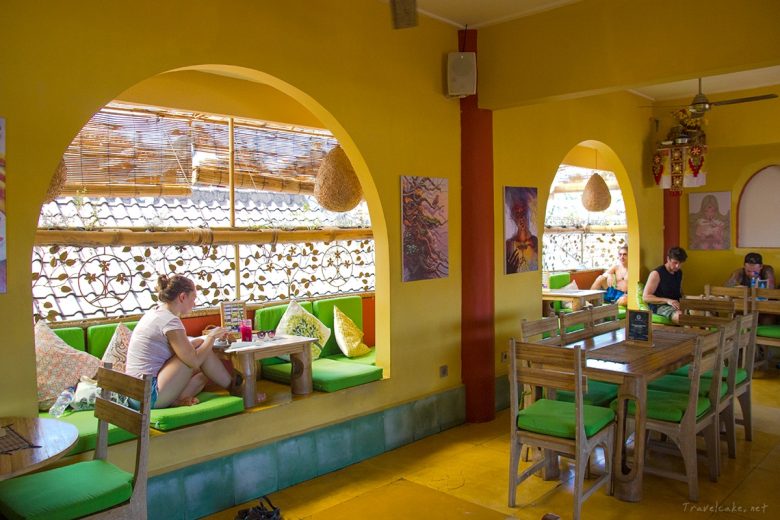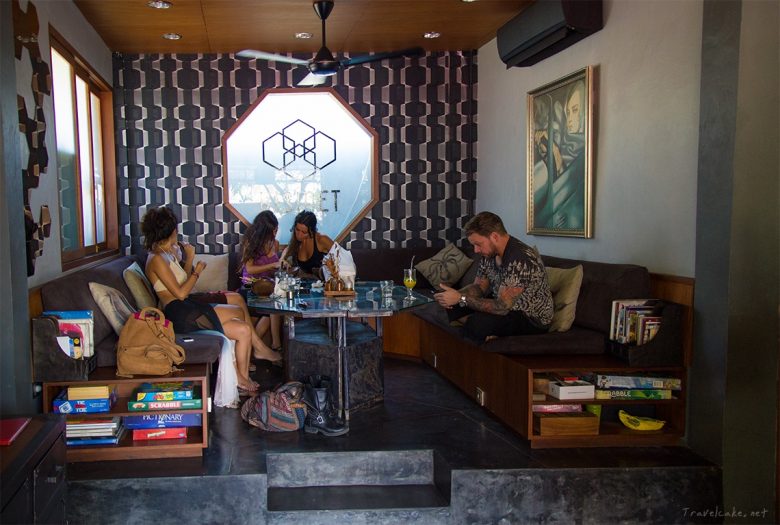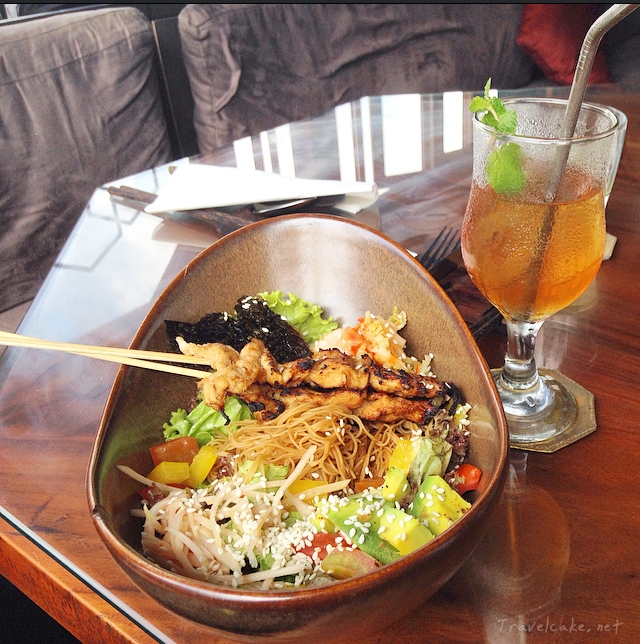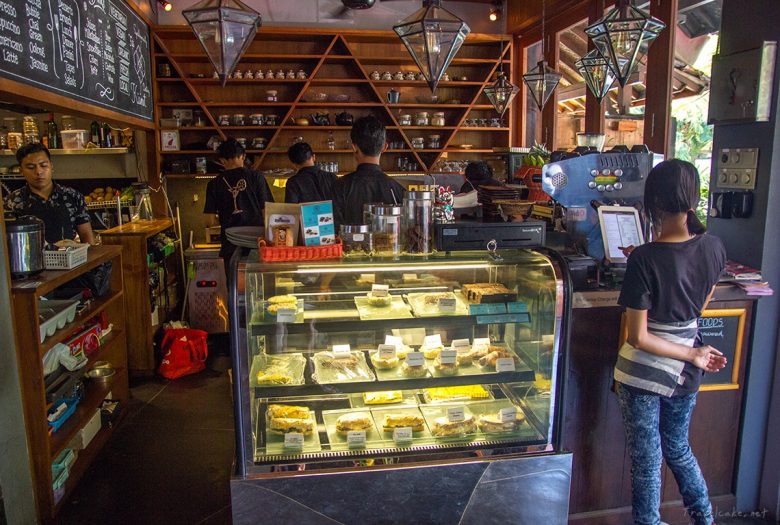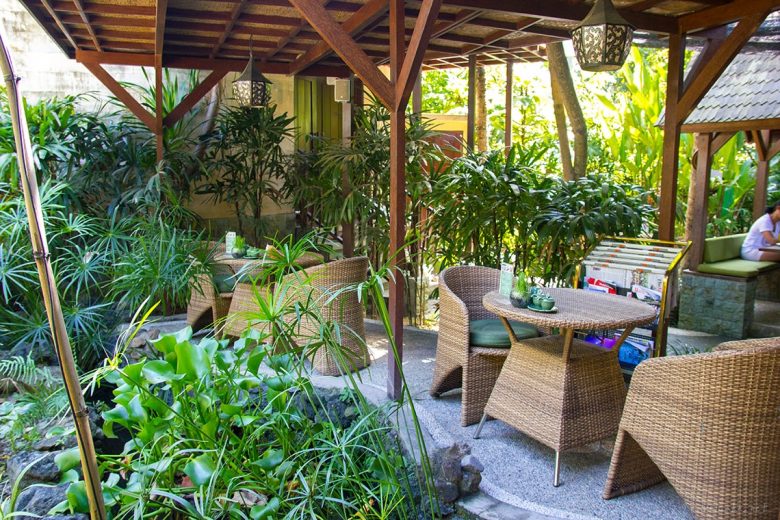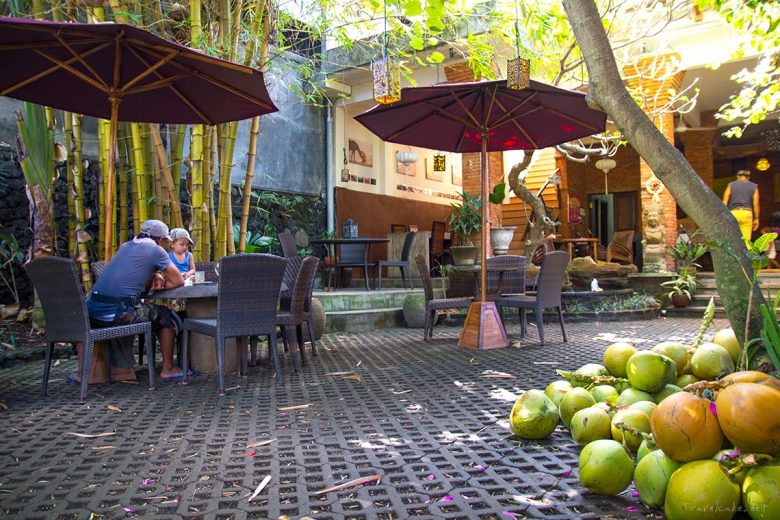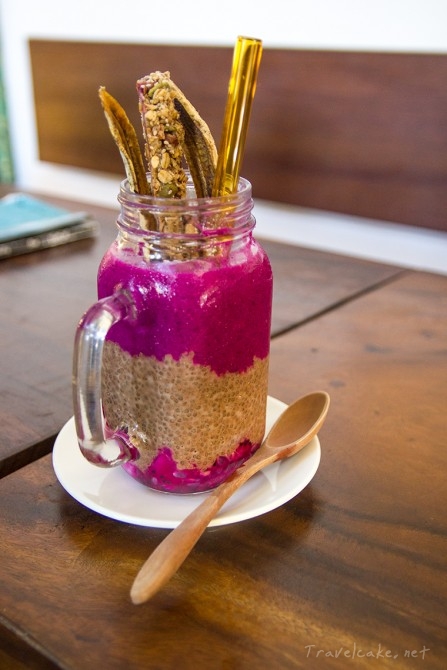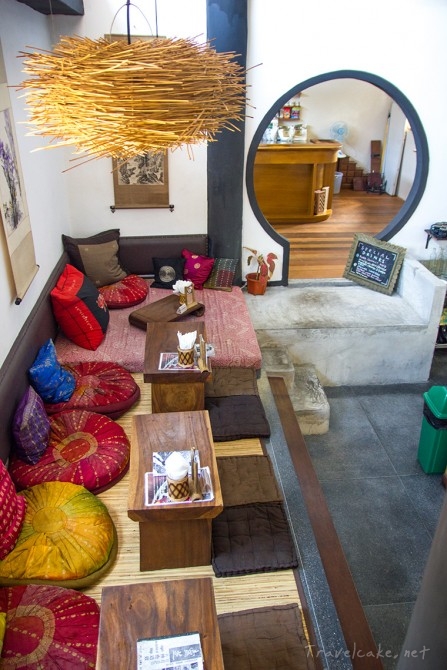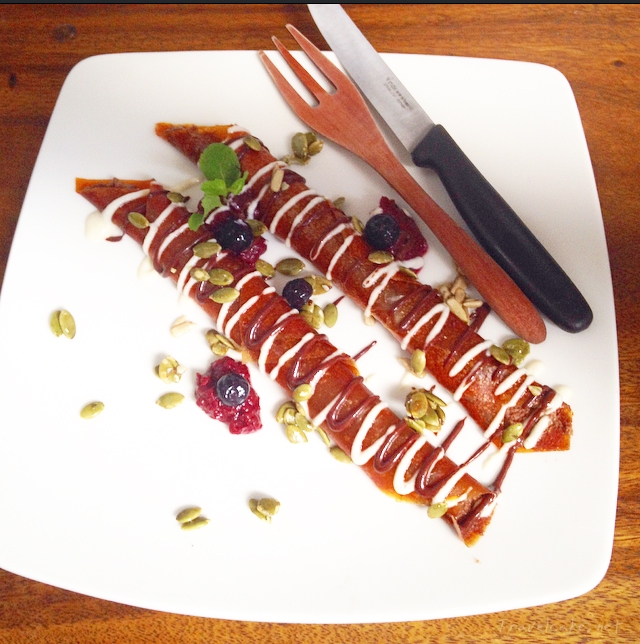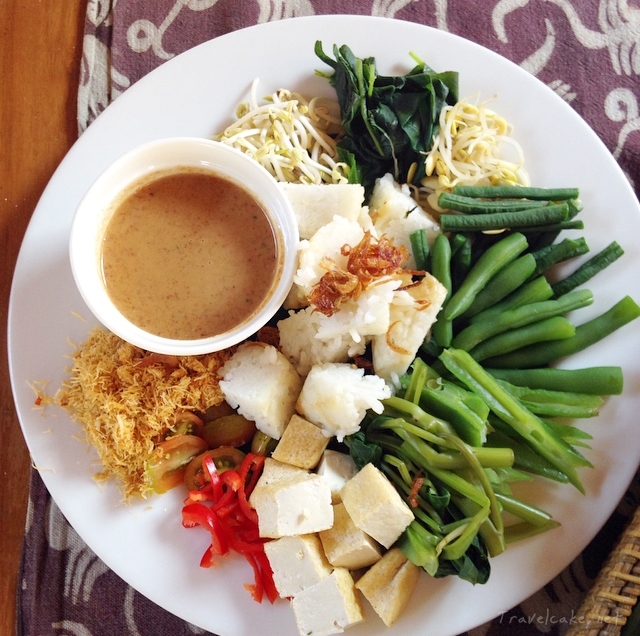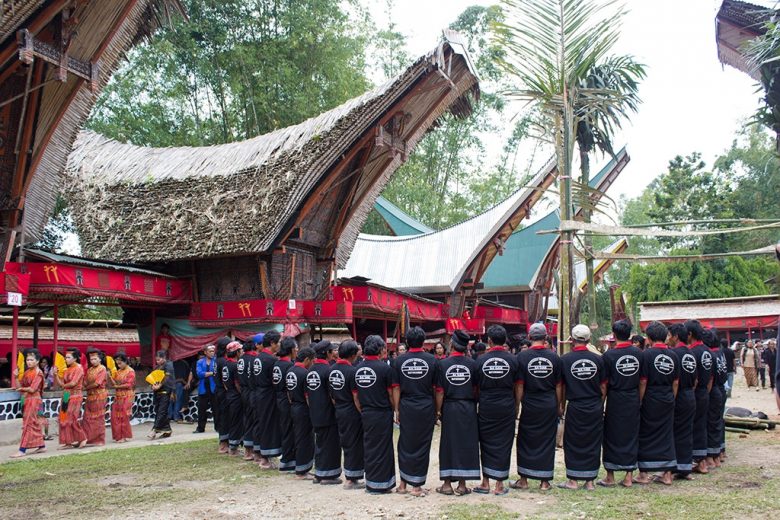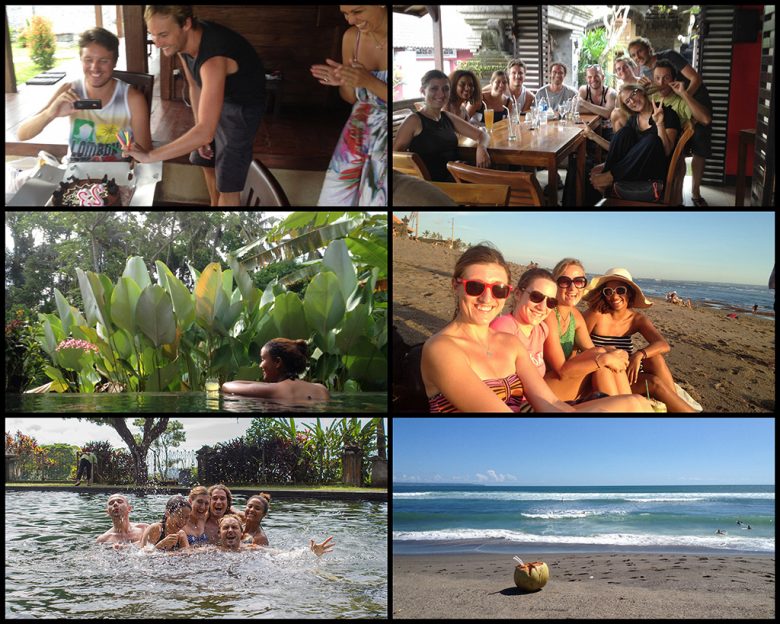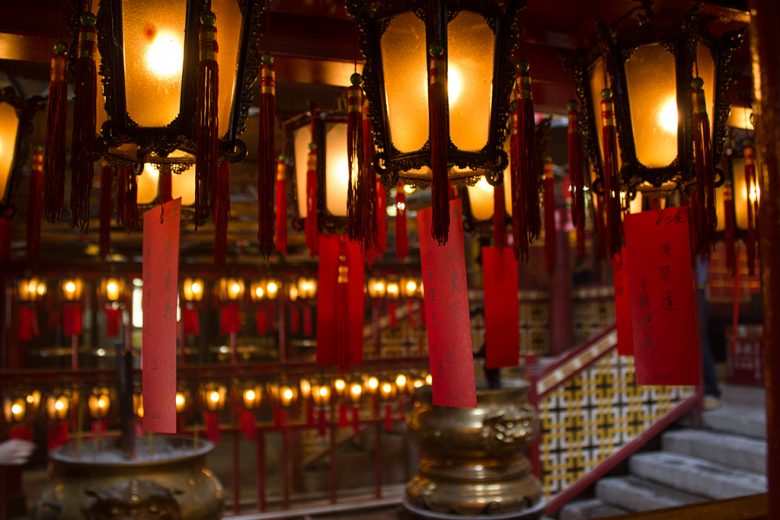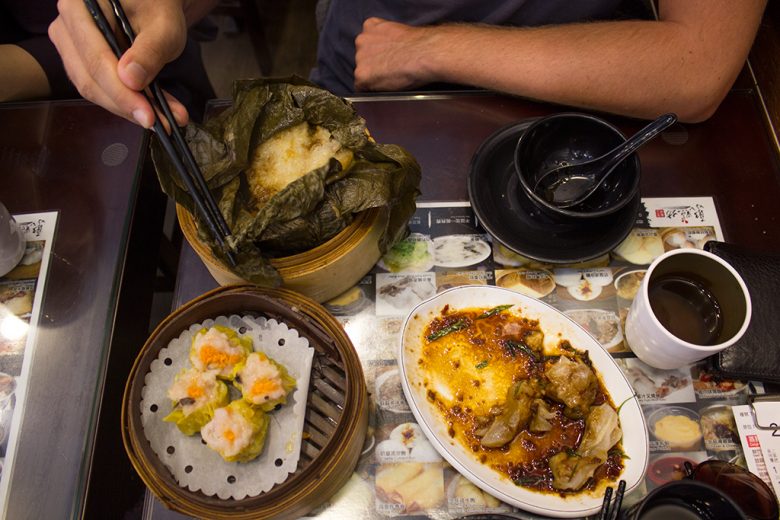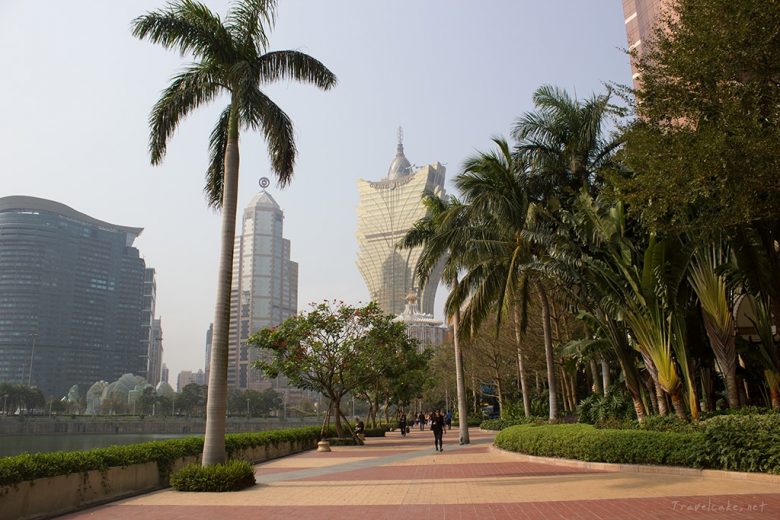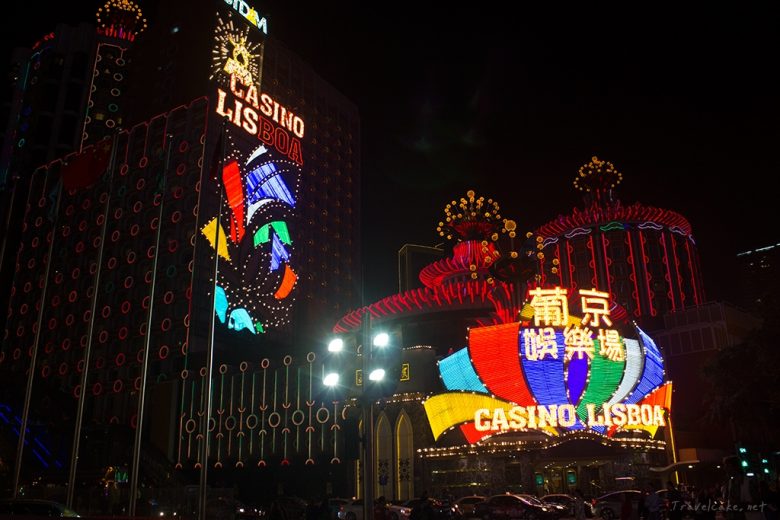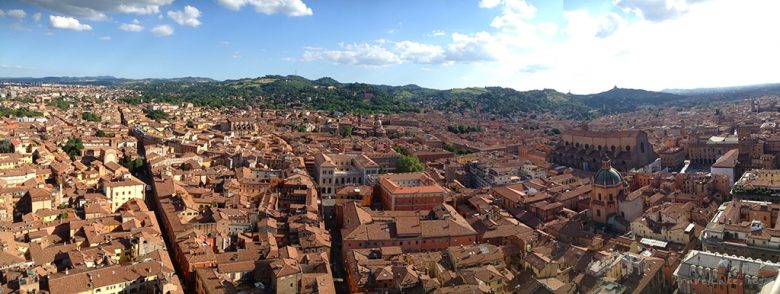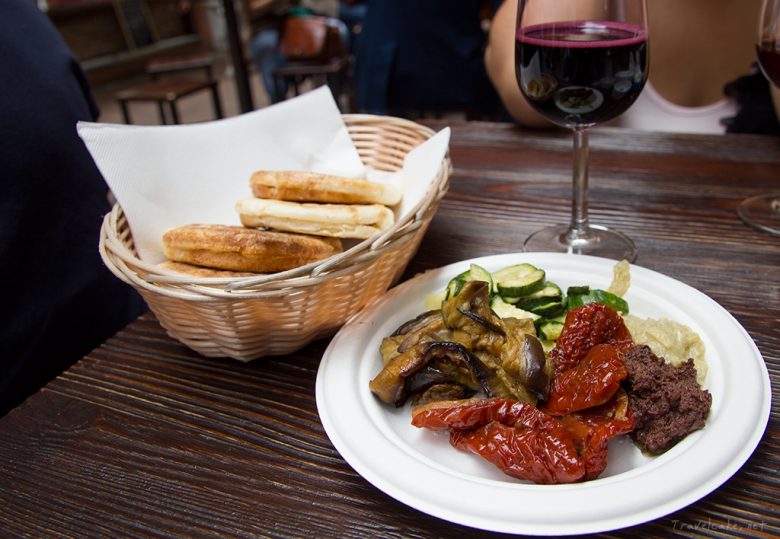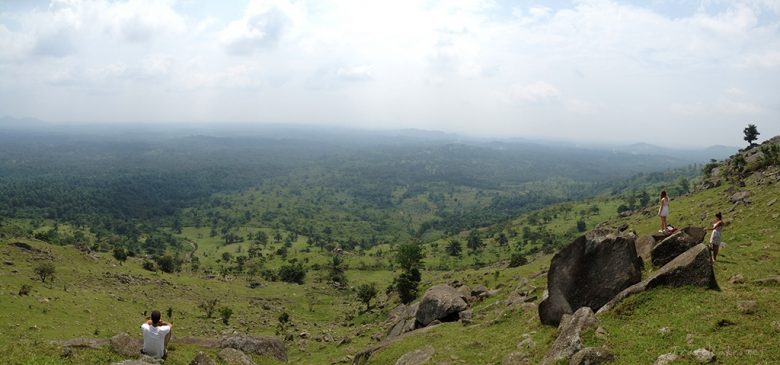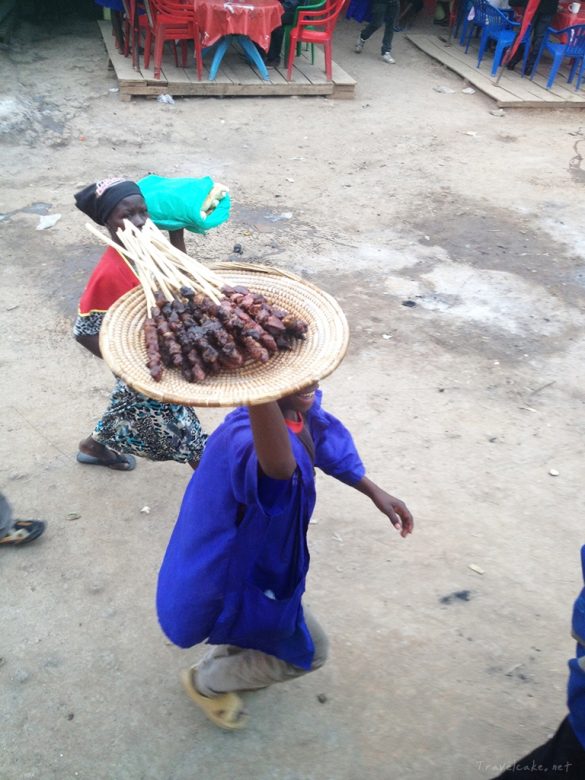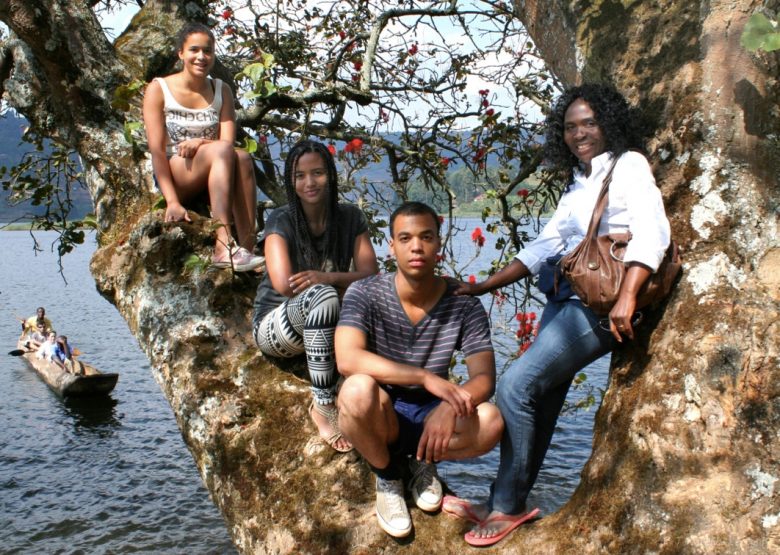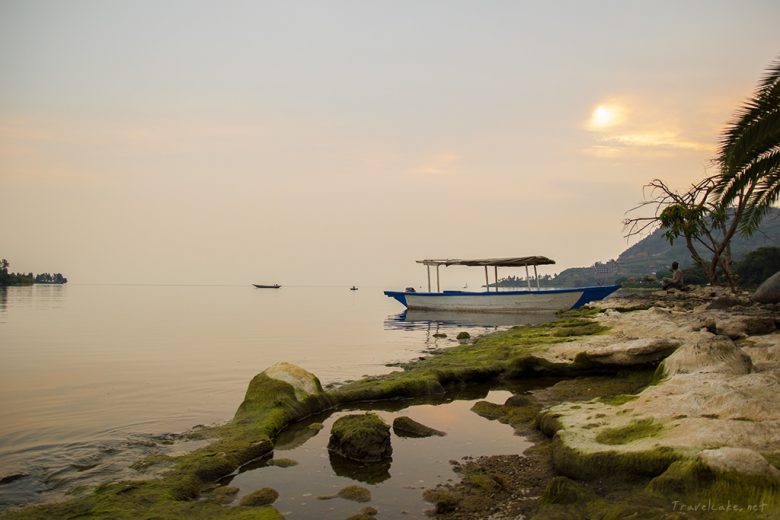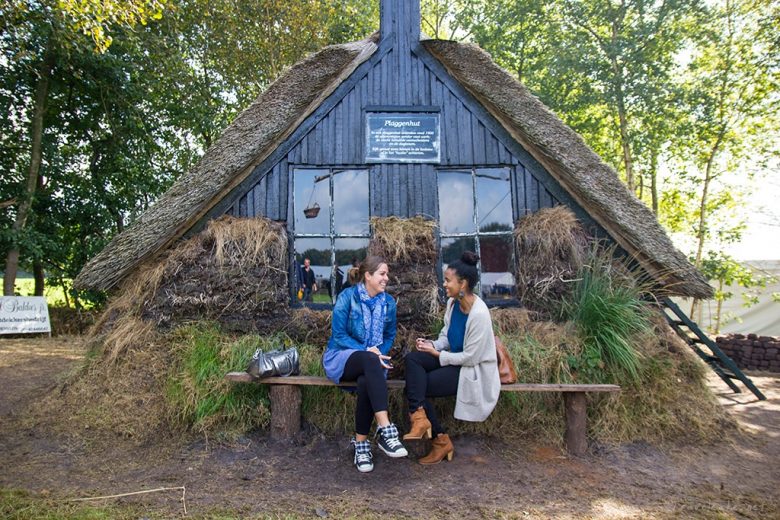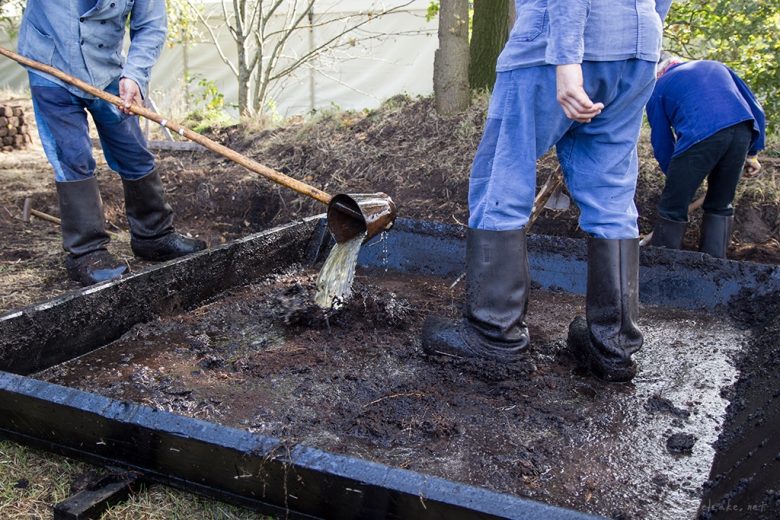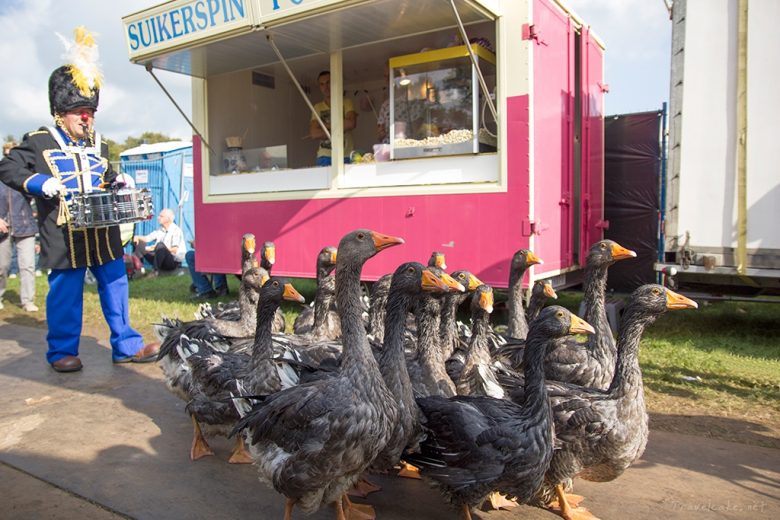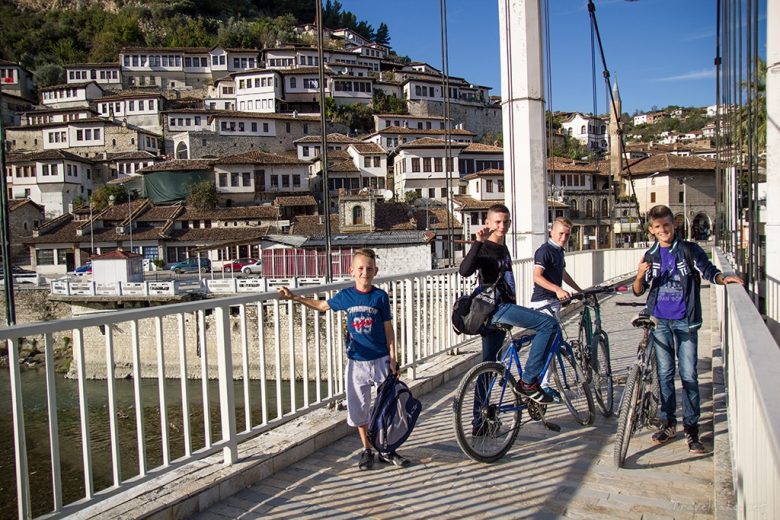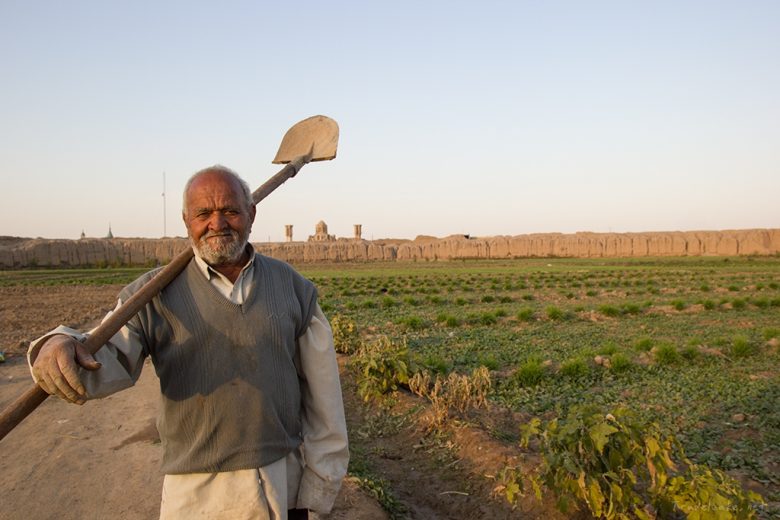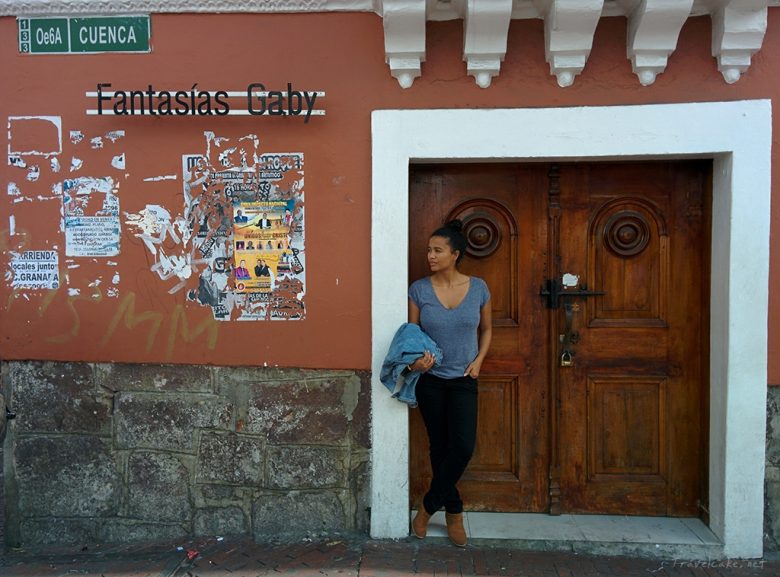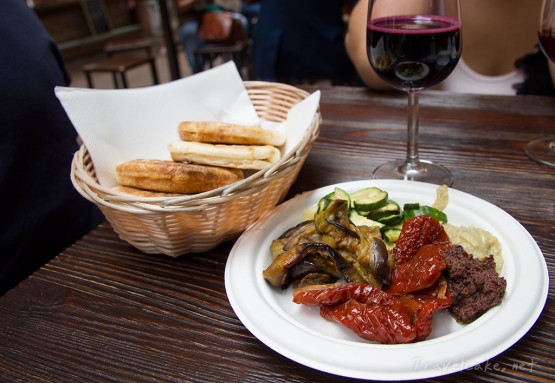A visit to the indigenous market of Otavalo in Ecuador is probably one of the most advertised activities in Quito’s guest houses and travel agencies. It’s said to be one of the largest and oldest indigenous market of South America and every single guide book will tell you it’s a must-do if you’re visiting the Quito area. That’s exactly the reason why I wasn’t sure if I’d want to go. (more…)
Tag: food
-
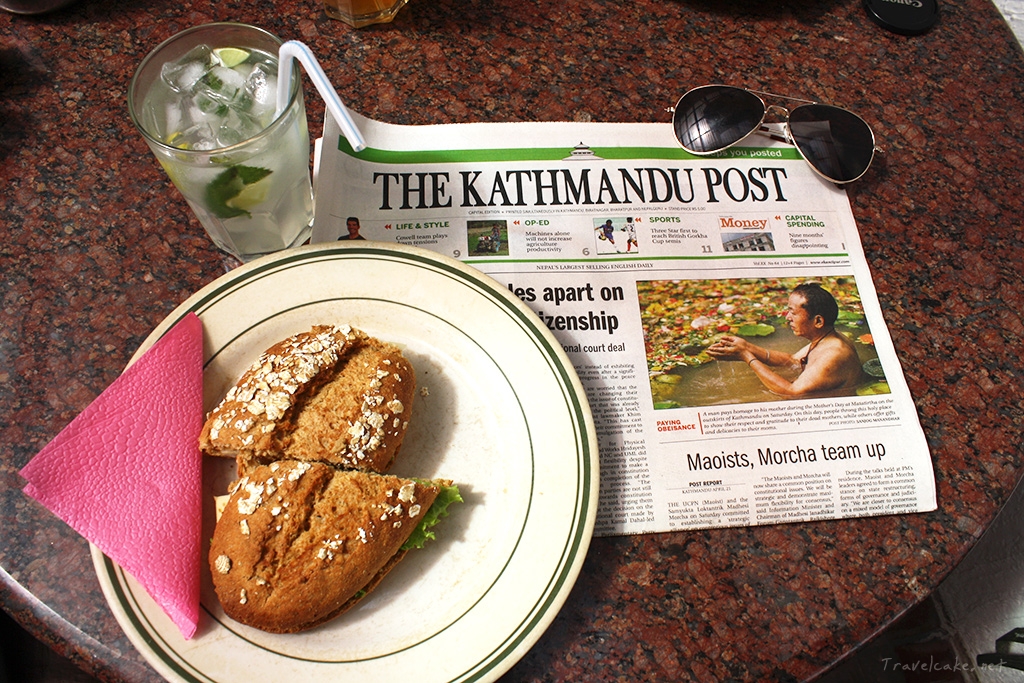
Eating Nepal
While Nepal is not particularly reputed for its “haute cuisine”, it does offer a few dishes that can tickle the taste buds.
Finding a tasty meal in Kathmandu is easy; there are foreign and local restaurants in abundance around the city. I had some authentic tasting Mexican food in a back ally somewhere in town, spent days ordering heavenly platters of goodness in a psychedelic vegetarian Israeli joint and savoured the best chocolate cake of Asia in a quaint road side café. All without much of a search. In Pokhara as well, there are enough great restaurants to make you gain the weight back you lost on a trek.
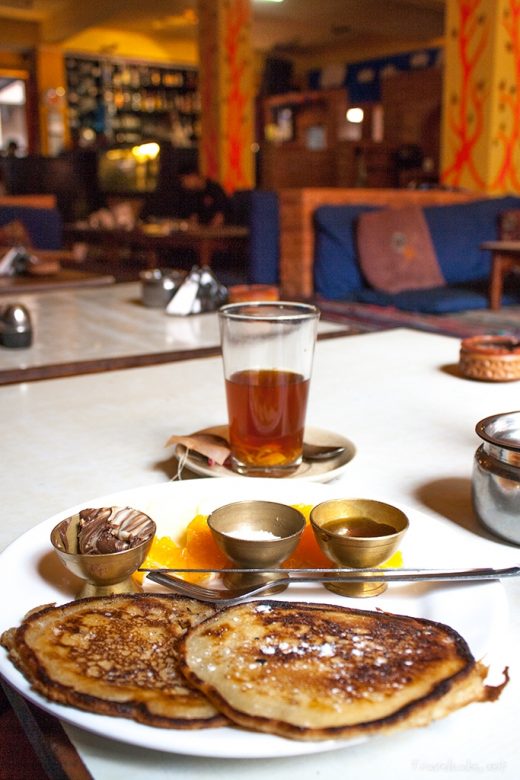
pancakes for breakfast in Kathmandu The quest for a tasty meal becomes quite a bit harder once you leave the big cities. There is relatively little variation in the dishes and whether they’ll be bland or not, is always a gamble. These are the most common options you will find in Nepal.
Momo’s
This your surest option if you want to have a descent quick meal. A succulent ball of meat wrapped in a blanket of glutinous dough; momo’s are sold at every street corner. Though usually steamed, the less popular fried variation is also available. They are comparable to dim sum but with a filling packed with spices and herbs. You would never guess from the way they look but they’re often incredibly juicy and fragrant. The best place to eat them is at a food stall on the street. They’re steamed right in front of you; as fresh as can get. Every now and then you can coma across momo’s with fillings other than meat- Snickers for example…
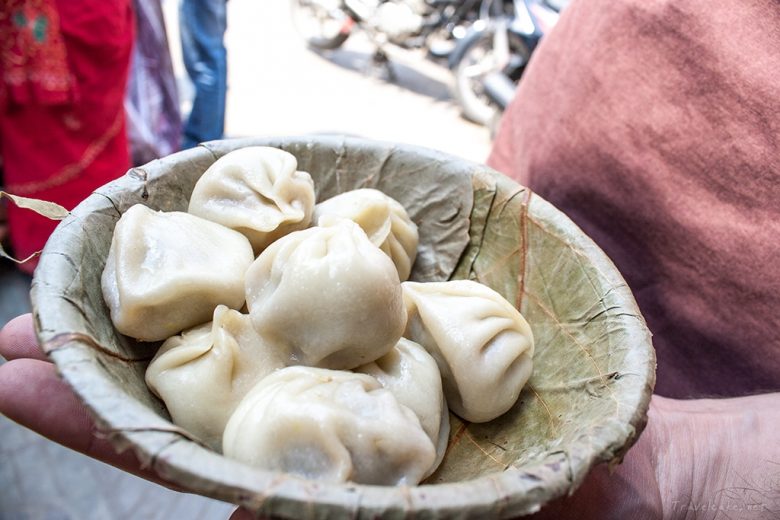
fresh street momo’s 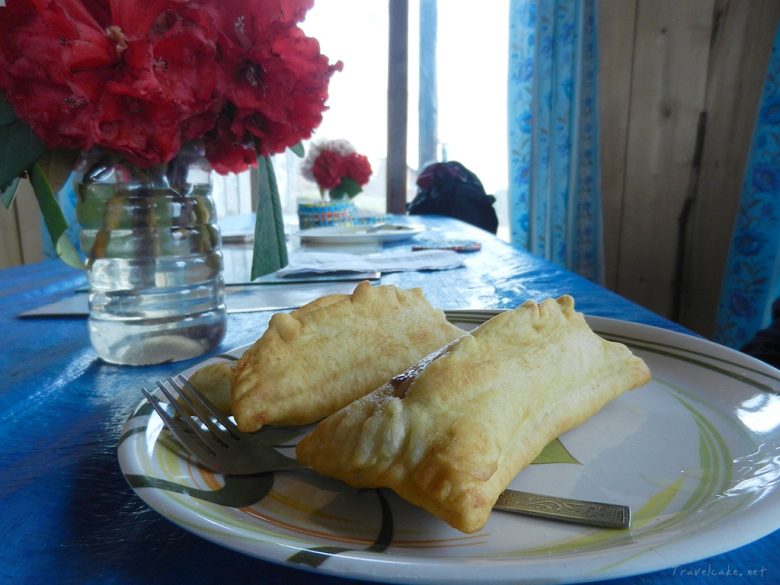
deep fried snicker momo’s, not a winner combination King Curd
Juju dhau a.k.a “the King of all curds” is a speciality from Bhaktapur. It’s made with naturally sweet buffalo milk infused with cardamom, cloves, coconut or ginger, depending on the manufacturer. The added spices are almost unnoticeable while still making a world of difference. It is then stored in clay bowls in a naturally cool place.With no added sugar, the king curd serves as an excellent refreshing snack or breakfast food.
You can find Juju dhau all over town; just look for a (cardboard) sign with a drawing of a pot of clay or order it in a restaurant. Inform yourself so you get the real deal instead of the watered down version made with powdered milk.
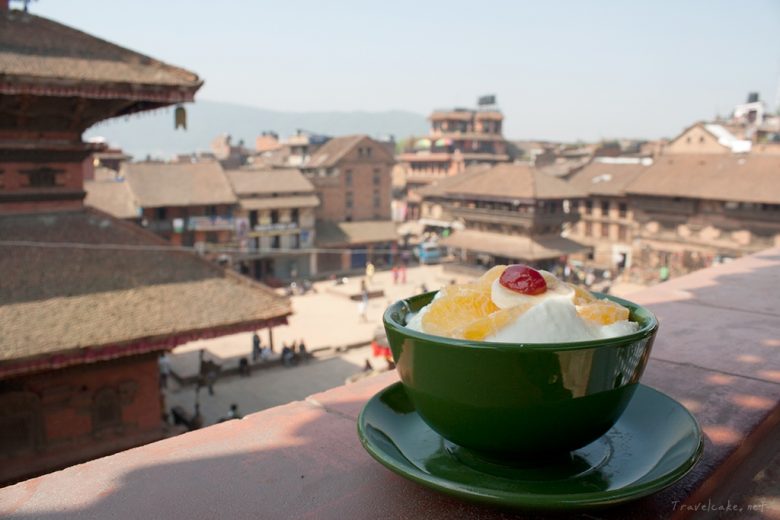
incredible breakfast curd on a Bhaktapur rooftop Dal Bhat
This dish is on every menu, no matter where you are in Nepal. I’ve tried it on several occasions but I was never convinced. I found it bland and unappetizing. Then again I’m not a fan of lentils in the first place and with it being the main ingredient of the dish… The only people I’ve heard say they really liked Dal Bhat were the Nepali, vegetarians and vegans. So who knows, you might enjoy it.

dal bhat, looking tastier than it is Trekking Food
Learn to love ramen noodles and/or eggs, because unless you’re bringing your own food, that’s pretty much what you’ll live off during a tea house trek. Also on the menu are fried rice, soups and a pricey dal baht. Any dish containing rice or fresh ingredients will pricey in the mountains because they have to be transported all the way up to the villages.
I like a bowl of Shakpa soup, a Newari comfort food. It’s exactly what you need to warm up in the chilly (ice cold) evenings. That being said, I loved trekking food in general, not because of the taste, I mean let’s face it, ramen noodles and egg twice a day is not the most exciting dish. But I loved it because of the gorgeous views it would come with, made everything taste so much better.
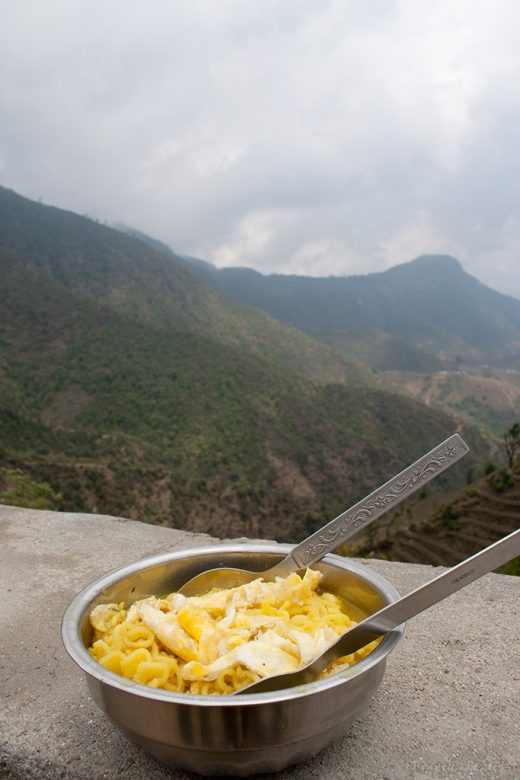
simple food with a view 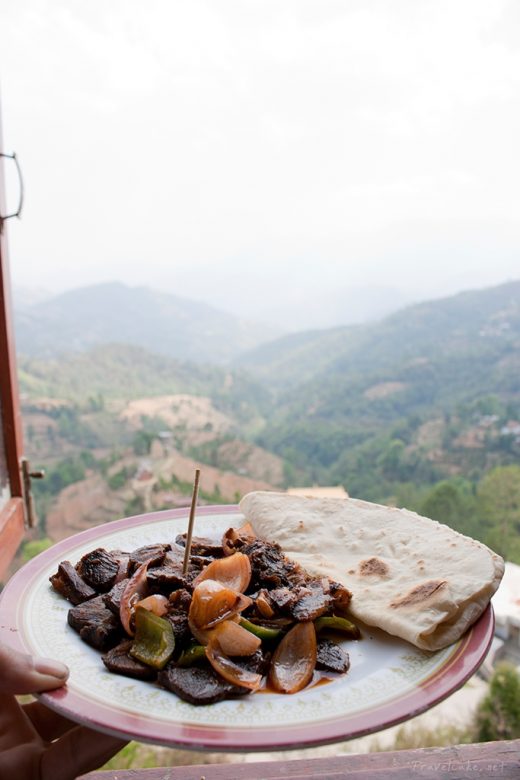
spicy buffalo meat Masala Lassi
Just like in India, the Newari lassi is sort of a natural, watered down yoghurt drink. It’s all natural and you can add fruits or honey to sweeten the drink. Or even better, go for the masala lassi. Masala is a mix of spices, in this case it’s often black pepper. Black pepper in your yoghurt? YES! It’s a fantastic combination!
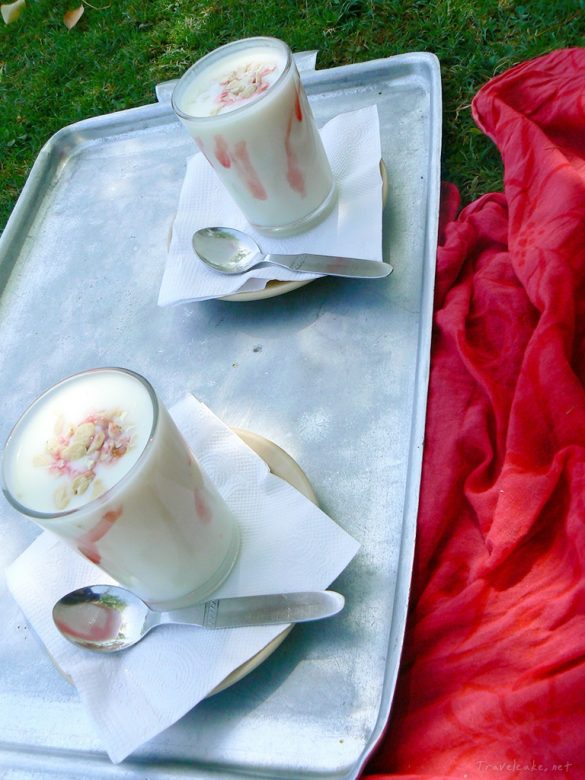
lassi any time of the day Yak Cheese
Who would have guessed there is incredible local cheese in Asia? None of us European cheese snobs, that’s for sure! Yak cheese grew to become one of my favourites. It’s a yellow cheese with lots character, which doesn’t seem to melt. Ideal to bring along on hikes. A definite must try.
The food may not be the country’s highlight but Nepal makes up for what it may be lacking in the kitchen with mind blowing nature, beautiful people, fascinating culture, great art and so much more. You won’t be worrying about the food much.
Have you eaten in Nepal? What did you think?
The post “Eating Nepal” first appeared on Travel Cake.
-
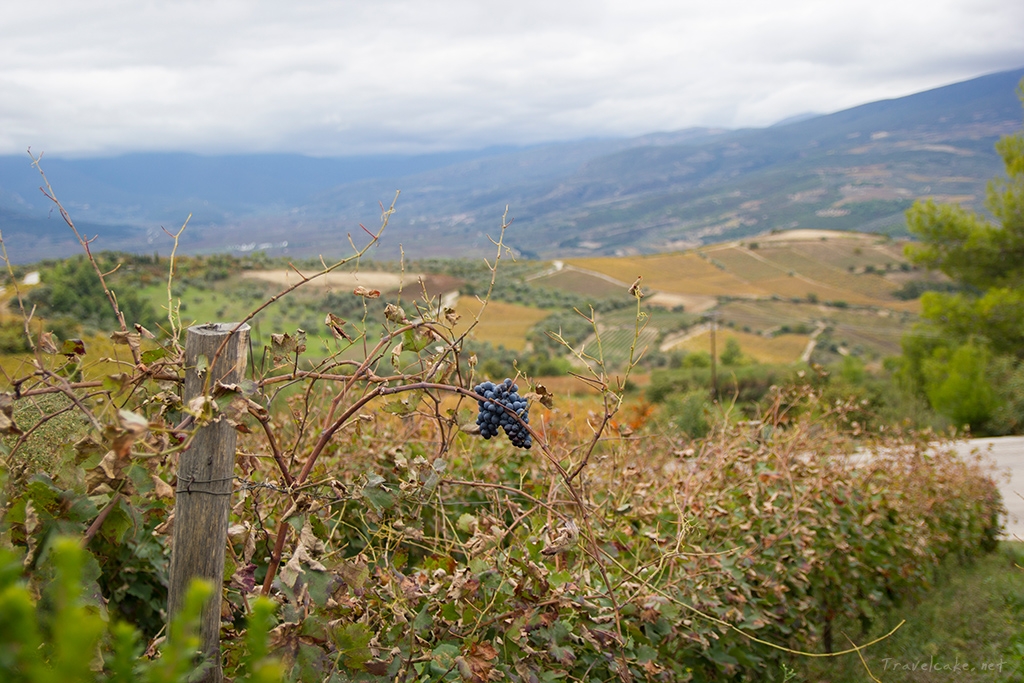
Wine Tasting in Corinth, Greece
When I think of “wine countries”, I immediately think France, South Africa, Chile, Australia, California… Greece doesn’t even spring to mind. Strange, because after all, during the antiquity, the Greeks were one of the largest wine producers in the region and their ancient techniques still form the bases of modern wine culture today! Greek mythology and history show us that wine played an essential role in ancient Greek civilisations. The Greeks even worshiped a wine god, Dionysus.
I knew all this from history and Latin classes in high school yet I still found myself surprised that there was such thing as good Greek wine. I guess it’s just not much promoted internationally.
Curious about this Greek wine, I decided to join a wine tour in Corinth to taste what was originally known as the nectar of the gods. I’m usually not a fan of bus tours, but this one was leaving from Athens, making a few stops in the old city of Corinth and finishing off in the countryside taking us to two wineries. Since it was quite far from Athens and you can’t possibly drive after a wine tasting, I thought I’d give it a chance.
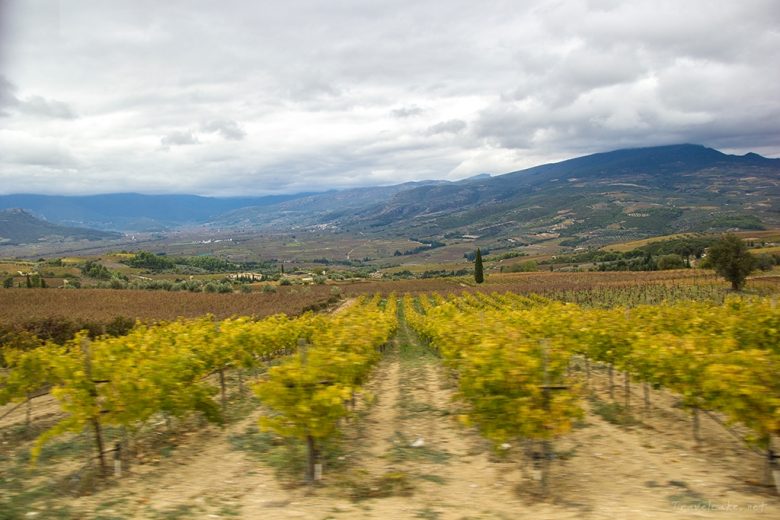
driving to the Corinthian countryside On our way to the winery, our guide Stella fascinated us with some of the myths taking place in the region. She topped off the storytelling with some personal anecdotes. She remembered that in the 70’s the farmers of this region were running low on food resources. Since they were using so much energy working the land, they looked for alternative ways to bump up their daily calorie intake. The answer: adding wine to their milk. Even children were given this concoction before staring their mile long walking journey to school.
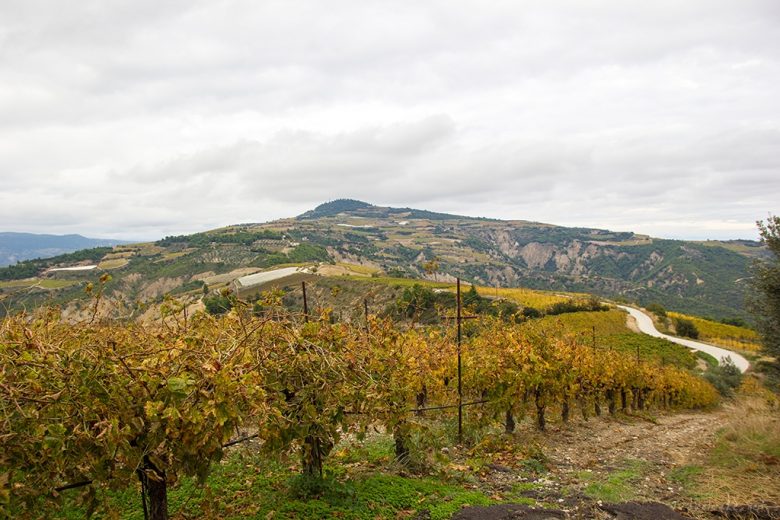
the Greek “winebelt” We arrived at the Seméli winery. Gorgeously set on a hilltop with incredible views over the Peloponnesian countryside. First, we got the wine estate’s grand tour, we say it all: the vineyards, the wine making process, the bottling, labelling and storing. By the time we got to the storage cellar, all we could think about was: “Wine. Must. Taste. Now.”
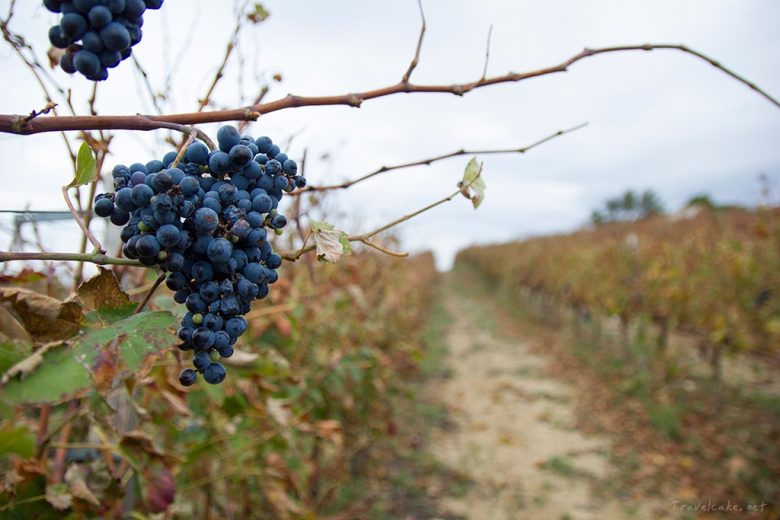
end of season grapes 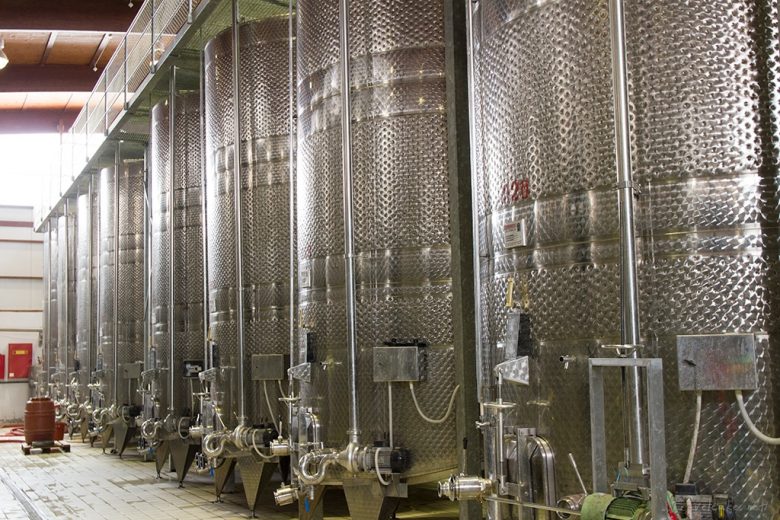
learning about the wine making process 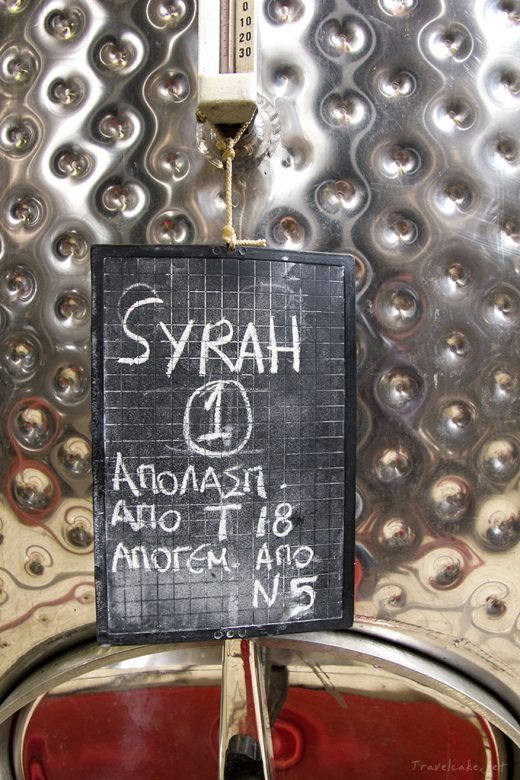
and the different types 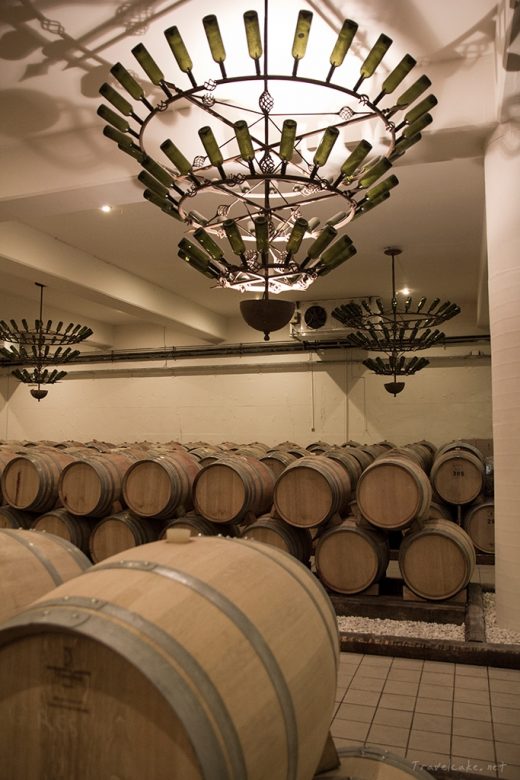
beautiful storage cellar Wish granted. We started with the lightest white wine and ended with a more mature, robust red wine. Now I’m absolutely not a connoisseur, so I don’t think it would make much sense for me to try to tell you how the wines tasted, would it? I can confidently say though, that I found them to be exquisite. My tour mates agreed. I bought their most expensive bottle as a gift, the reserve -which was a steal at only €8- and I would have bought a bottle of white and rosé for myself, were I not backpacking and flying out of the country the next day.
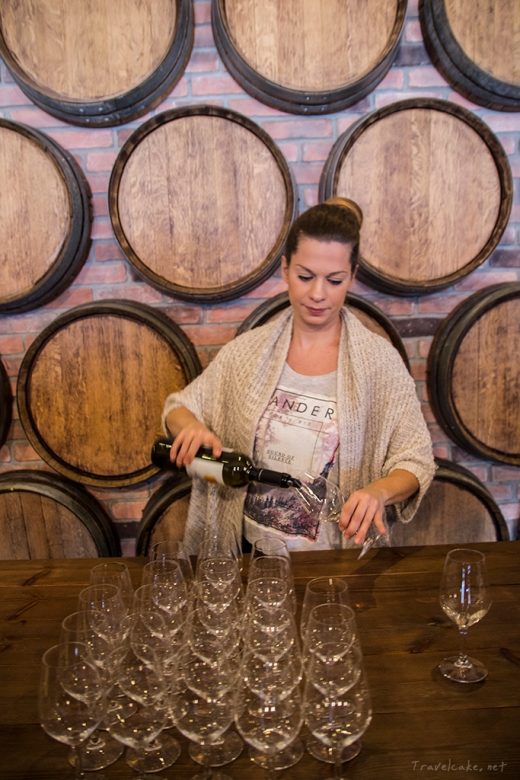
Nemea wine turned out to be an incredible value for money wine 
tasting my favourite white over and over again 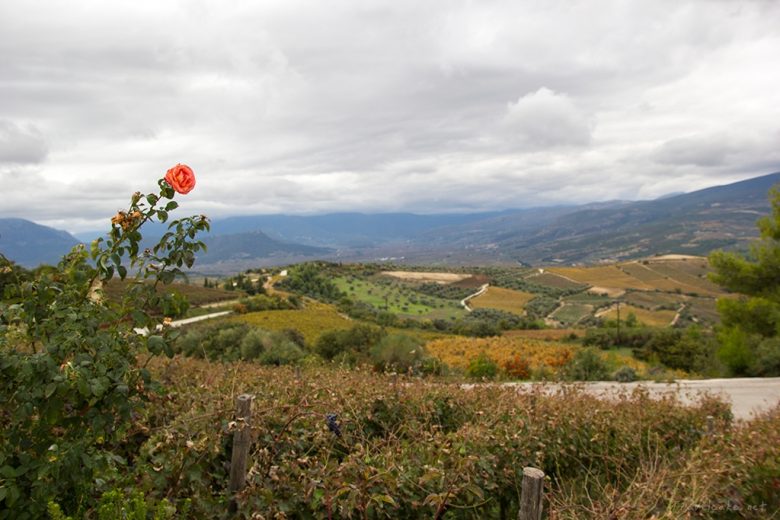
wine tasting with a view After the tasting, a light lunch was provided. Deliciously fresh and simple Greek staples.
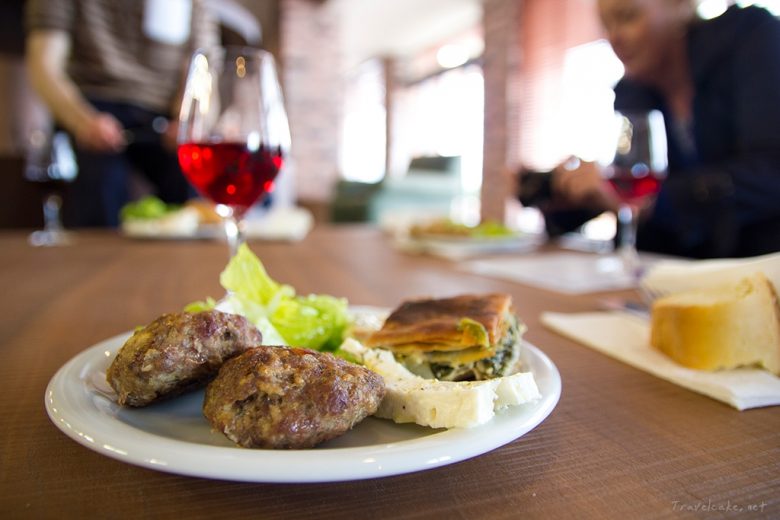
Greek delights to accompany the wine On our way to the second winery, our guide received a call informing her that the second winery could no longer accomodate us due to an unexpected event. What a bummer! Especially because we could have stayed longer in Seméli.
Loosing flexibility is one of the reasons why I’m not too fond of tours. So we started our journey back to Athens, a little disappointed. However, that disappointment was soon forgotten when we managed to convince Stella and the bus driver to stop on the way so we could enjoy some more of the countryside.

olives on the side of the road 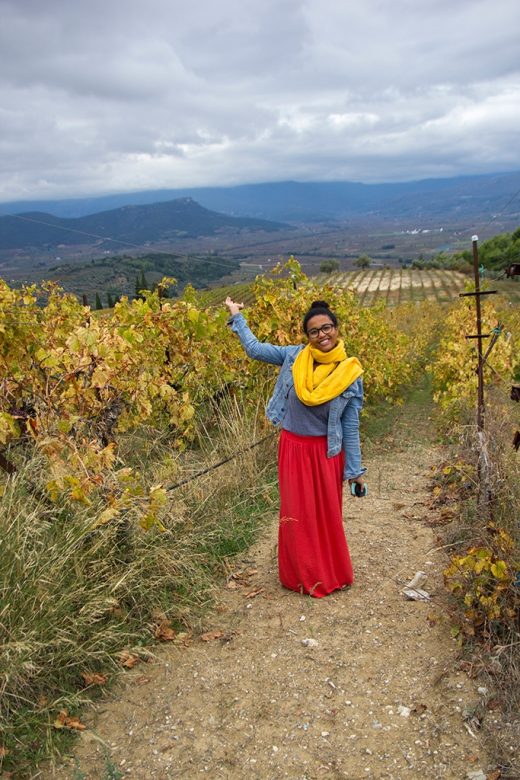
running through the grapevines I LOVED the whole wine tasting experience, just like I thought I would. I will definitely be doing it again in the next wine country I visit. Tours are still not my cup of tea, but because the other participants were fun and interesting, I did very much enjoy the arranged excursion. Besides, as said earlier, there is really no other way to do a wine tasting than to be driven around unless you’re spending the night at the winery.
You can visit Seméli independently though, just make an appointment by contacting them. Order lunch with them or bring your own. If you would like a day tour from Athens (including wine, lunch and a visit to ancient Corinth and Nemea), there are several companies offering the same tour with prices ranging from €77 to €100 per adult.
This tour was offered to me by the association of tourist guides as part of TBEX activities.
Have you taken a wine tasting tour before? Where was it?
The post “Wine Tasting in Corinth” first appeared on Travel Cake.
-
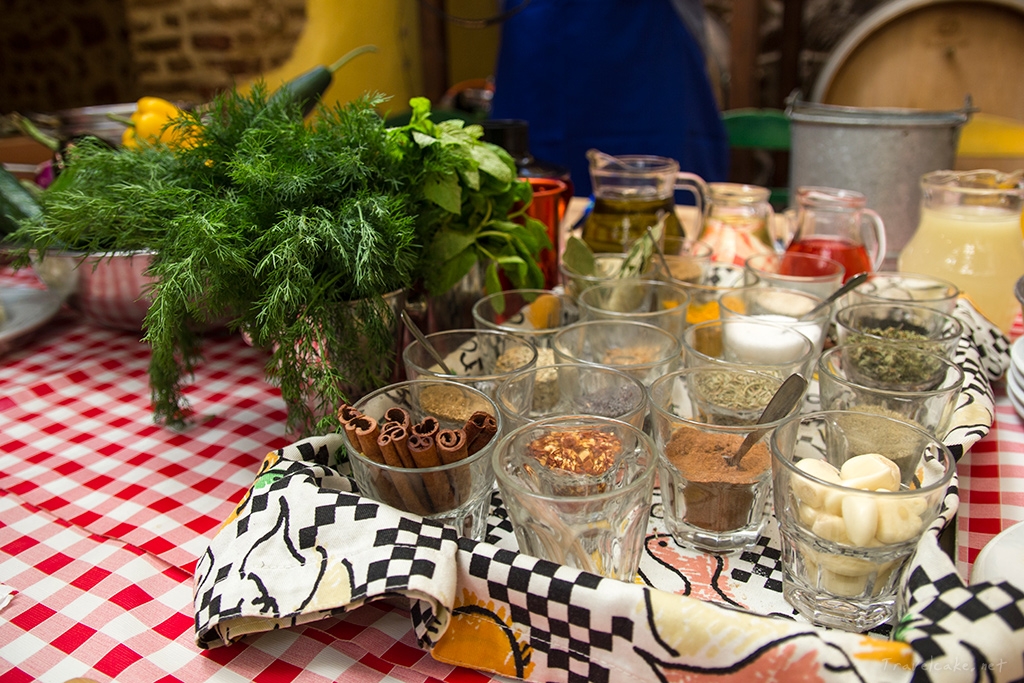
A Greek Sunday Dinner: Cooking Lessons in Athens
The first thing that sprung to mind when I decided to go to Greece was: “YES! Greek food!” I’ve always been a fan of the Greek cuisine. Feta is one of my ‘go-to’ cheeses and moussaka happens to be my signature dish. When my friends and I are at an impasse on what or where to eat, a Greek restaurant always seem to be the choice that has everyone’s agreeing happily.
When I travel to a new country I try to learn to cook a couple of dishes or at least the basic principles of the local cuisine. I slip backstage of a small restaurant or hang out in the kitchen while a family mom is cooking, but I had never taken a real class before. So I was psyched to join the cooking lesson organised by Athens Walking tours with a group of travel bloggers attending the TBEX conference.
The “Greek Sunday dinner course took place in a quaint tavern called Klimataria, where they’ve been serving traditional homemade meals since 1927. What an honnour to learn some new cooking skills in one of the oldest taverns in central Athens!
The host and cook of the evening, the lovely Maria Sotou, greeted my classmates and I with a warm smile and a shot of raki. That’s when you know you’re welcome!
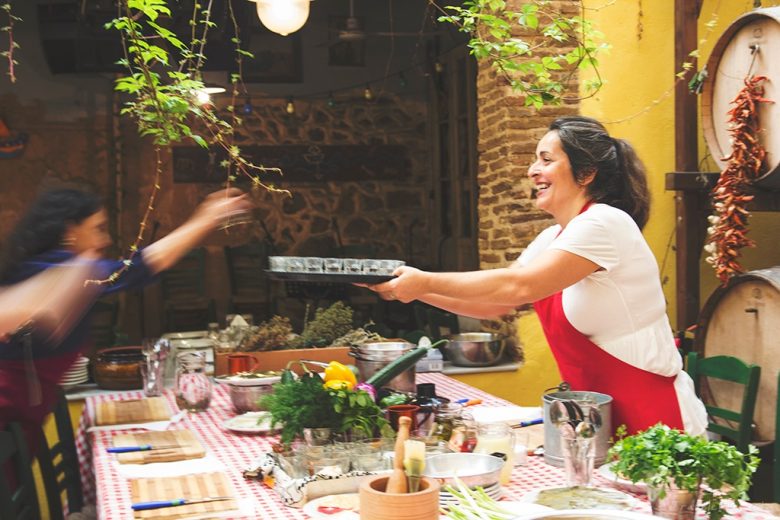
Maria helping us start the lesson the right way We threw on our aprons and gathered around a table filled with fresh, colourful ingredients. This was going to be a good experience, I could smell it. After washing our hands -of course- it was time to get them dirty again. We had a loaded agenda; we were going to make 6 starters and one main course in just a few hours. And upon completion, we would taste our creations.
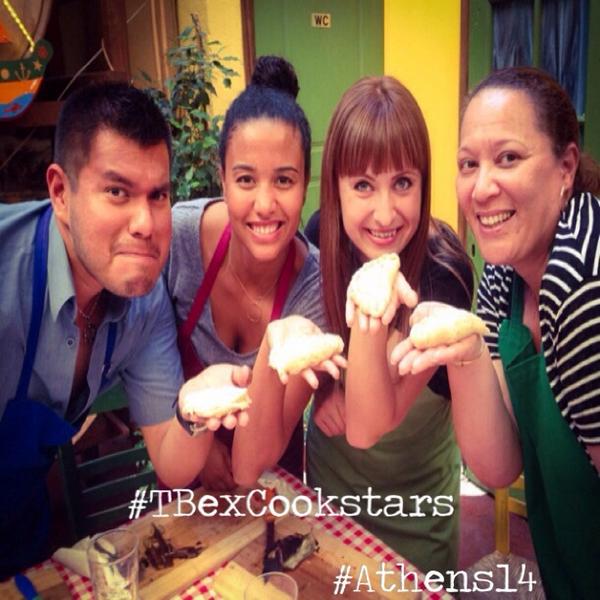
bloggers at work Maria showed us the tricks of the game by explaining everything we needed to know about fresh produce, Greek culinary traditions, herbs and spices… She even let us in on some of her kitchen secrets. Part of the learning process was tasting some of the regional specialities. We sampled several types of cheeses, nibbled on savoury pastries and were introduced to some herbs I had never even heard of.
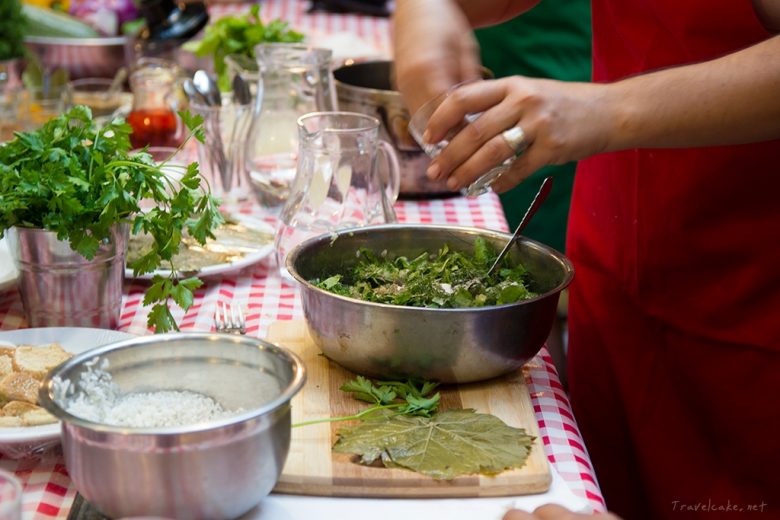
mixing of herbs After a seemingly short amount of time, we had whipped up mini eggplant pies, learned how to make some fabulous dips and prepared dolmadakia from scratch. The entire class was so excited and eager to learn we got sidetracked by our questions, jokes and -what else could you expect from a bunch of bloggers- extensive photographing. Therefore, we ran out of time to make all the dishes we had planned to prepare. Luckily for us, Maria had all the dishes prepared by her staff while we were learning so we still got the chance to savour them and took the recipes home.
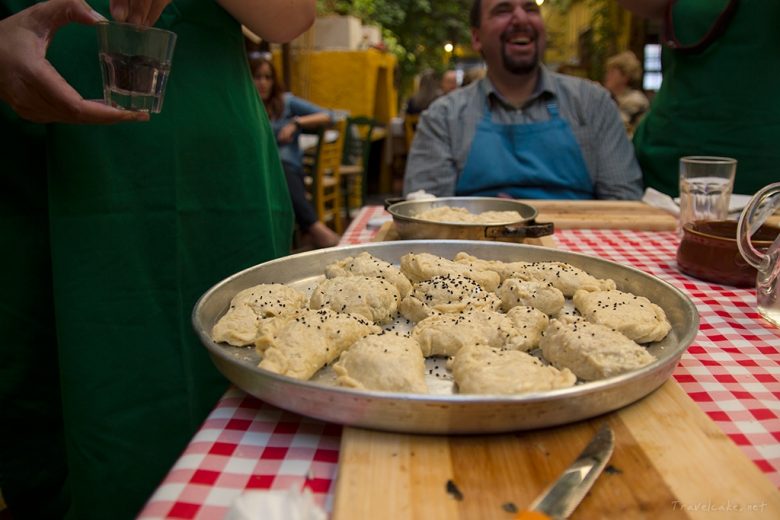
mini eggplant pies and laughter 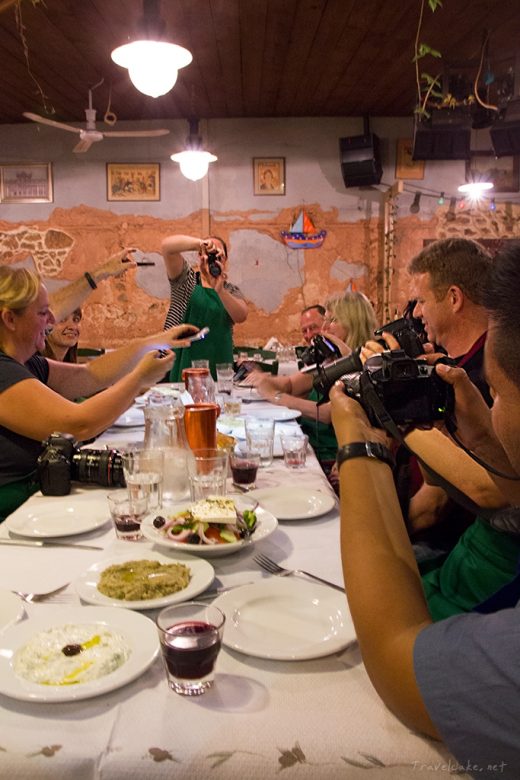
this is what happens when you gather bloggers around food As our stomachs started to growl we were invited to settle down at a large dinner table, our hard work (and mostly the work of the kitchen staff) was about to be payed off. We started with some homemade wine and then the food started coming in. Dish after dish, “ooh’s” and “aah’s” followed. There was so much food! Apparently it’s the Greek thing to do: spending a very long time at the dinner table, talking, drinking and enjoying copious amounts of deliciousness. As I mentioned earlier, I thought I knew Greek food, but this… This was something else. What I had eaten before almost seemed like garbage compared to what was lying on this table. This meal was undoubtedly one of the best I’ve ever had. Just the way I like it; simple comfort food with fine and pure flavours. As Maria thought us: “The main ingredient for cooking is love”.
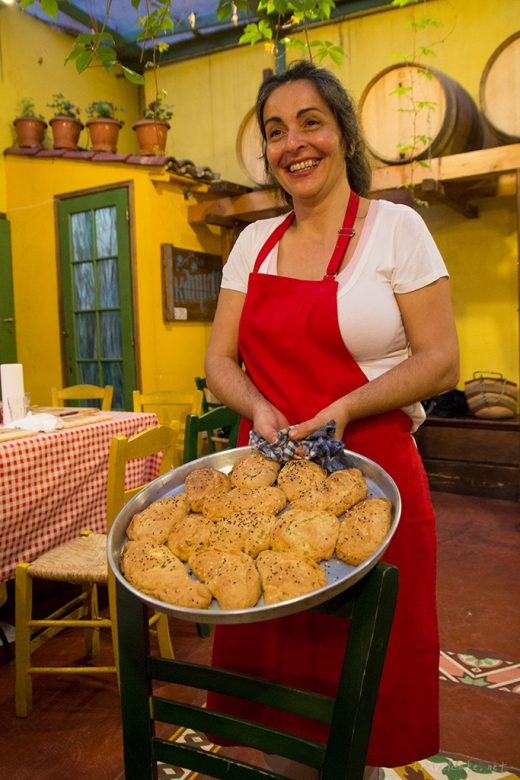
Maria bringing out our freshly baked eggplant pies 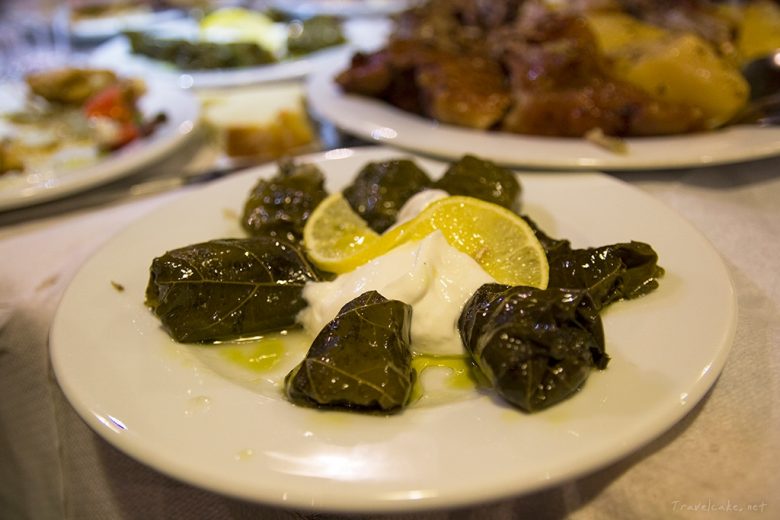
dolmadakia 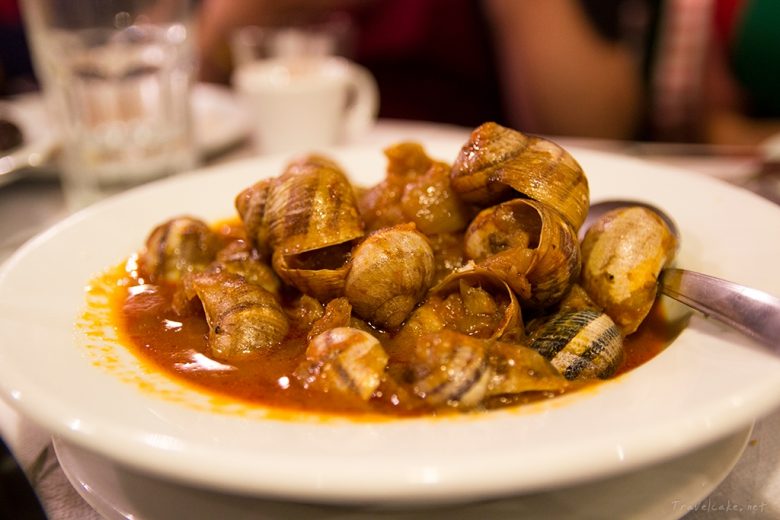
escargots 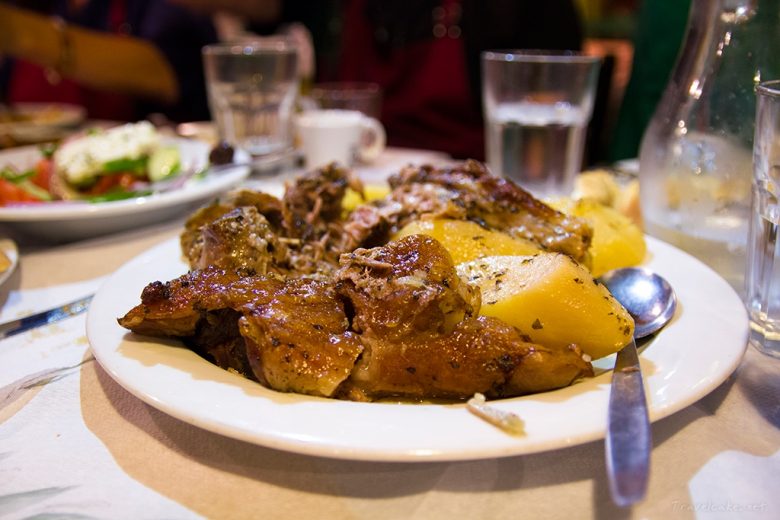
slow cooked lamb in hull I can only recommend this cooking class if you’re ever in Athens wanting to dig a little deeper in local traditions. The class doesn’t come cheap at €68 per head, but it does come with wine and a meal you will not soon forget.
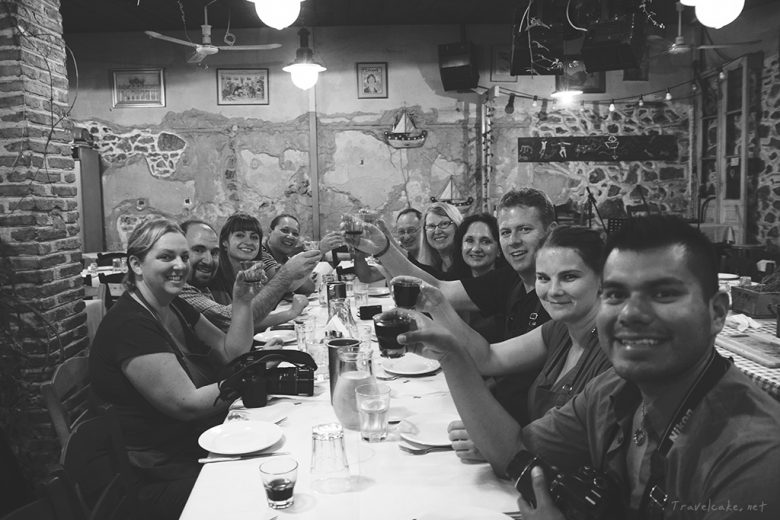
“cooking creates a bond” Maria tells us. Should you be on a tighter budget or have too little time to take the lesson, do consider dining in the Klimataria tavern. A meal for two including salad, appetizers, two main courses and wine will set you back about €25-30, a good deal I recon. They also host live music a few times a week, check out their website to find out more.
Have you ever taken a cooking class abroad? Which cuisine(s) did you learn?
The post “A Greek Sunday Dinner: Cooking Lessons in Athens” first appeared on Travel Cake.
-

Bologna “la grassa”, a foodie’s paradise
Bologna is often referred to as the culinary capital of Italy. Because of its abundance and variety in high quality cuisine, the city was nicknamed “la grassa”or litteraly “the fat” during the Middle Ages. It was this little fact that had me browsing for flights and checking my calendar. Since I’m currently staying in Europe for a few months, I couldn’t possibly resist a food trip to Italy, could I?
So I packed some loose fitting clothes and off I went. Due to work obligations, I only had a short 3 days of spare time, thus limited eating opportunities. I didn’t get a chance to sample all that the Emilia-Romagna region has to offer, but I can tell you this:
La grassa does not disappoint!
Some of the staples I tried:
The Italian cliché: espressos and cappuccinos
It’s probably one of the first things that come to mind when you think of people-watching on an Italian terrace, whether you like coffee or not. The espressos were just as strong and tiny as I’d expected them to be and the cappuccinos had a perfect steamed-milk foam collar. For someone who doesn’t usually drink coffee, I sure had lot lot of caffeine racing through my system. Good thing it’s absolutely not done to order a coffee after 12pm or else I would have been bouncing off the walls all throughout my stay.
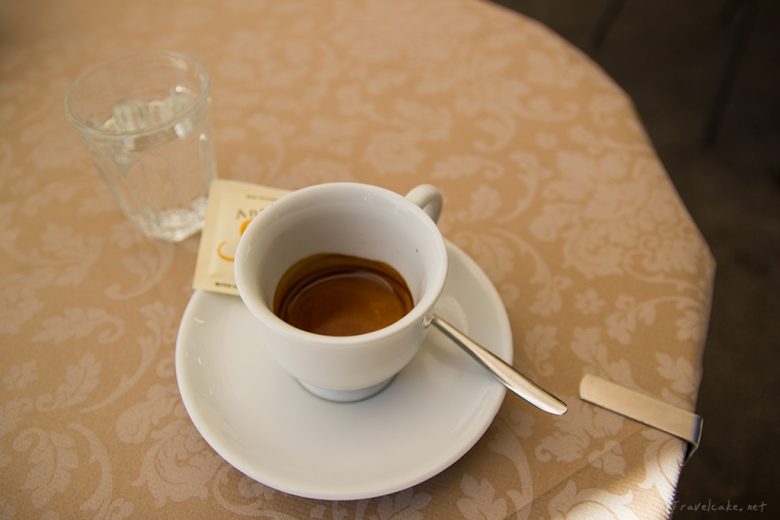
pre-breakfast espresso, comes with a glass of water to consume BEFORE the espresso to clear the palate 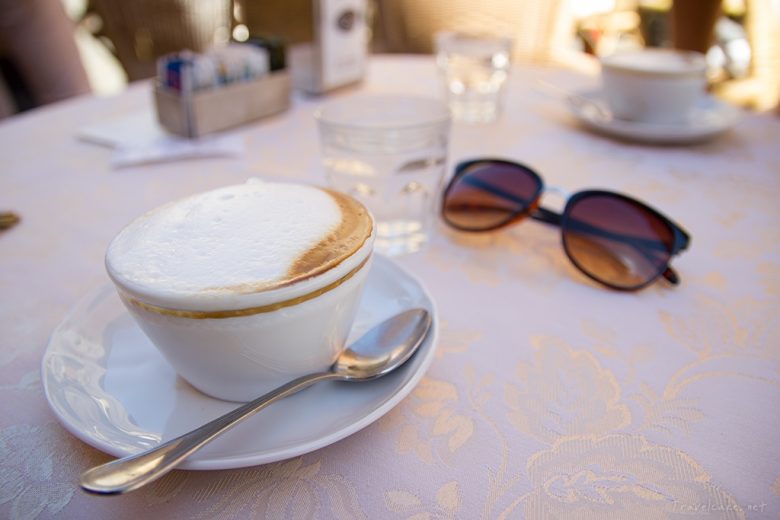
post breakfast cappuccino 
playing with foam Cured meats
Cured meats are not my thing. I hardly ever eat any, but these… These I could eat all day, everyday. It made me wonder if we can even call what we’re consuming cured meats. Typical for the region are pancetta, mortadella, different types of salami, prosciutto, zampone… Most eateries offer mixed platters which allows you to sample the different types of artisan meats. For cured meat fans, this is heaven on earth!
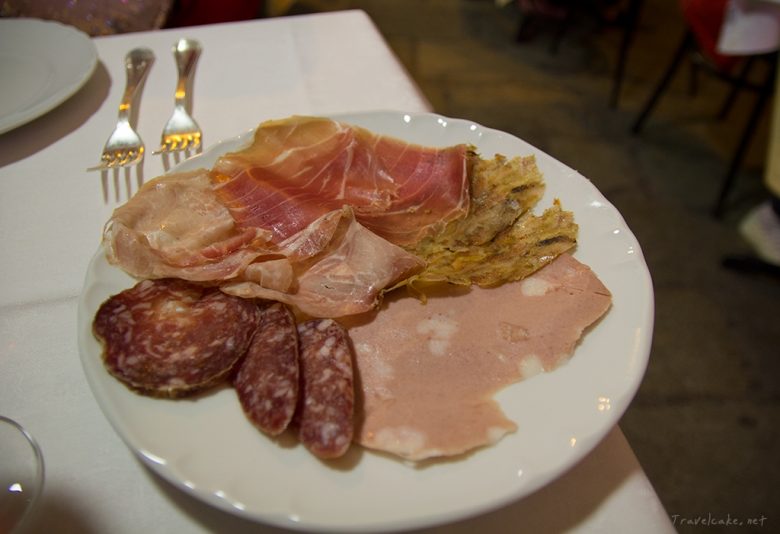
delicate and refined in taste Parmesan
The home of parmesan cheese! This is where the good stuff is made. I wasn’t fortunate enough to visit the parmesan factory, so I did the next best thing; I waited for the crowds to leave and went to the market near closing time. I talked to the vendors who were relaxed since there was no line of people waiting to get served. I asked them questions about the cheese making process and tried different types of parmesan, to find the one I liked best. The vendors were very informative and eager to share their knowledge.
The “real” balsamico vinegar from Modena
Of course I’ve had balsamic vinegar before, but the real balsamic vinegar carries history and is made according to tradition. It tastes similar to your supermarket variety but really, it’s almost a different product. Did you know the traditional balsamic vinegar goes through an ageing process? Well, I didn’t! I tried a 25 year old vinegar. An incredible explosion of aromas! When I heard it pairs well with chunks of parmesan, I just had to try this unusual combination. Just exquisite.
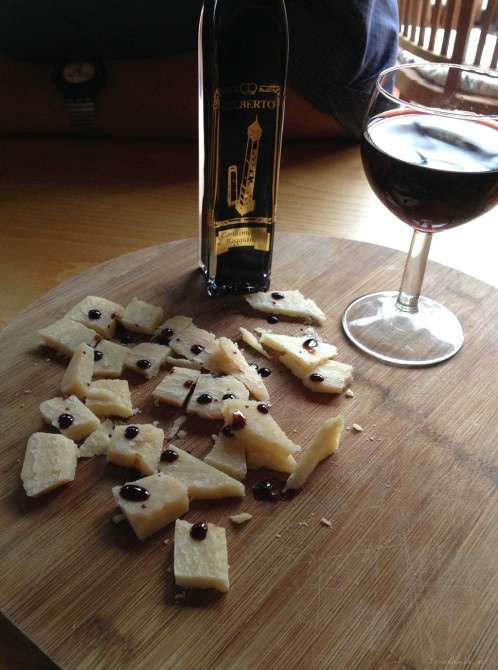
parmesan with balsamic vinegar Lambrusco
I tried out lots of Italian wines, a frizzante (sparkeling) Lambrusco is my favourite. I was surprised to learn how widely exported this wine is, as it was first I heard of it. There are white and rosé varieties but the sparkling red is really something unusual and particularly tasty.
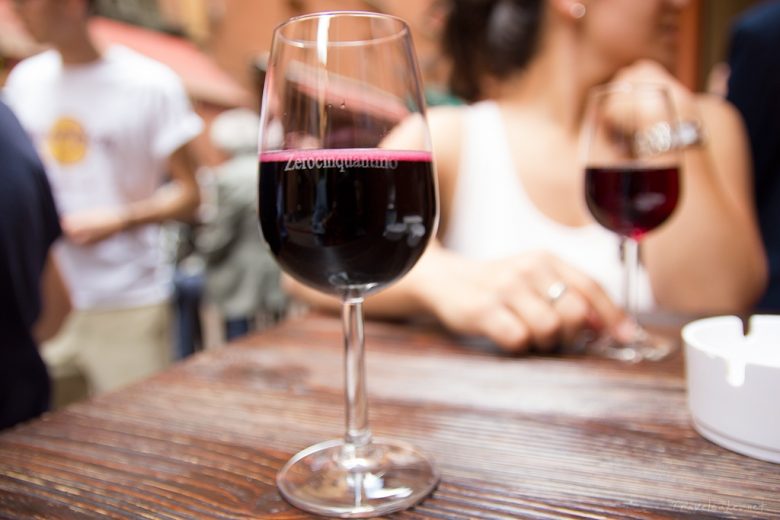
refreshing glass of Lambrusco The original Bolognese sauce
So, what we know as spaghetti bolognese turns out to be… a big fat lie. There is no such thing as spaghetti with bolognese sauce. The original sauce, called ragù, was created in Bologna, explaining the ‘Bolognese’ part of the name, but is not -and should never be according to the Italians- served with spaghetti. It has to be served with (preferably fresh) tagliatelle. I must say, I do prefer ragù with tagliatelle than with spaghetti.
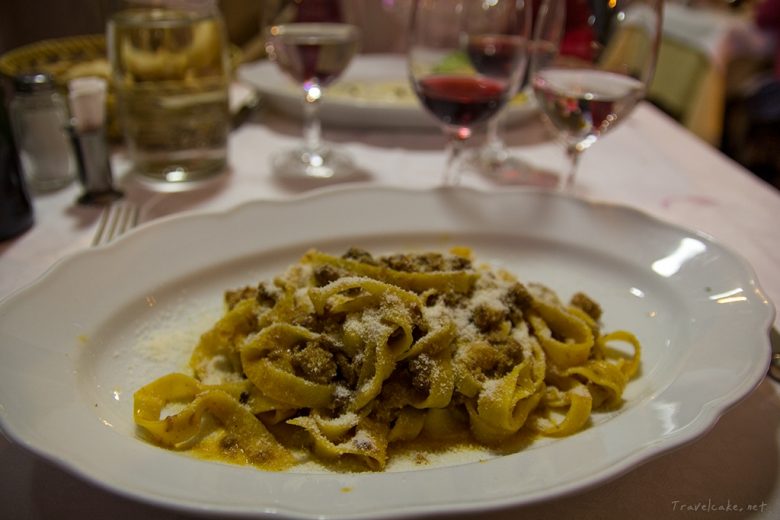
ragù alla bolognese Fresh pasta
Tortellini, tagliatelle, ravioli… You see them in shop windows looking so fresh, so delicious. I couldn’t resist and bought a wide variety to cook at home. Yes, I left Italy with a suitcase full of pasta.
Piadina
A flatbread typical of the Romagna region. It’s what you would have instead of a sandwich or a wrap. The toppings vary, but are mostly local products. It doesn’t look like anything extraordinary but looks can be deceiving. The freshness of the products and their delicate taste elevate this snack to a higher level. Make sure to get a piadina that is freshly made.
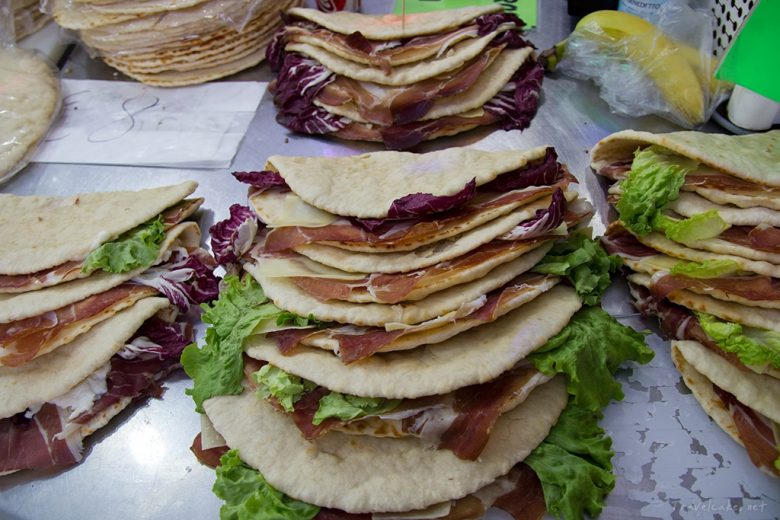
piadina on the go 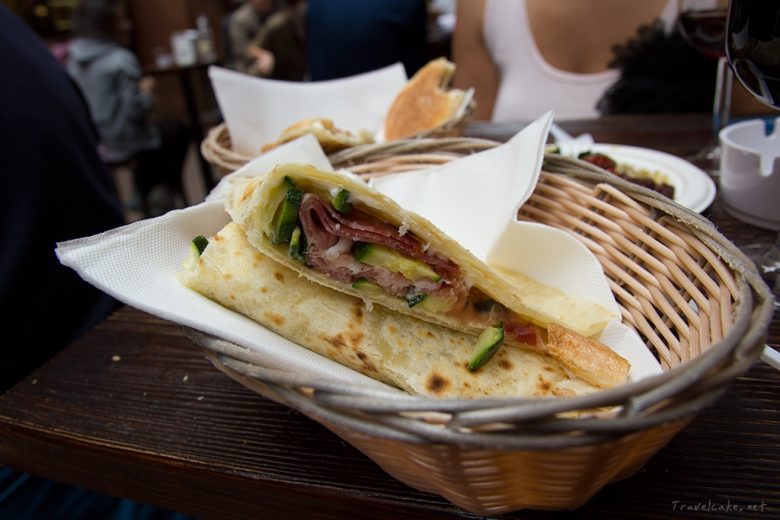
freshly made with local toppings Parma ham
There are so many different types, with different ageing processes I couldn’t chose which one to get. That’s why I asked the shopkeeper to give me a few slices of his favourite one. There is a factory in the town of Parma open to visitors where you’ll learn all about Parma ham a.k.a proscuitto. I wasn’t able to visit, but the tastings were good enough for me.
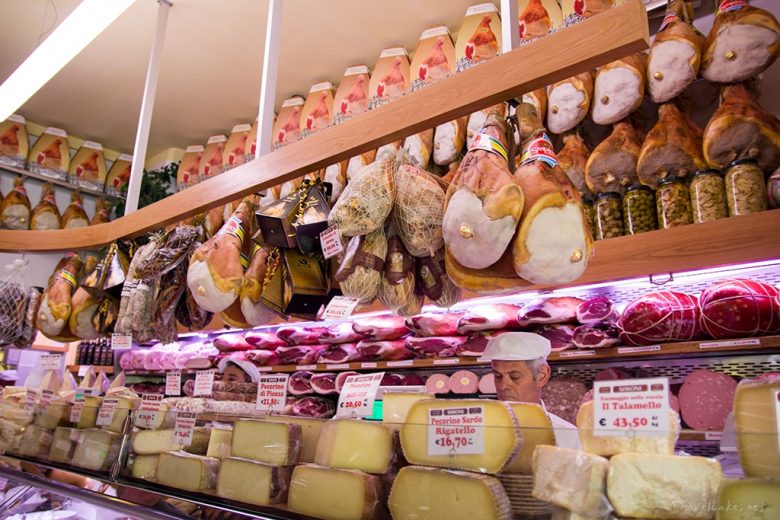
shop selling all the local delicacies Gelatto
Another classic in Italy. So rich, so flavourful.
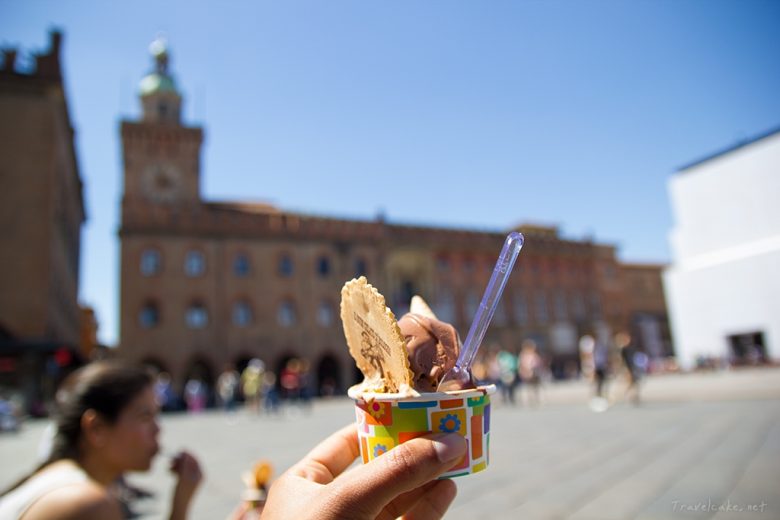
chocolate-hazelnut gelatto Aperitivo
This was my favourite part of the trip. Every day, from around 5.30pm to 9pm most places in Bologna offer food with every drink you order. Some places offer a buffet, others have a fixed aperitivo dish of the day. Everybody flocks to these places after work to have drinks, a chat and something to eat. The food is included in the price of the drink. Aperitivo is the social meeting the culinary and that is perhaps why I enjoyed it so much.
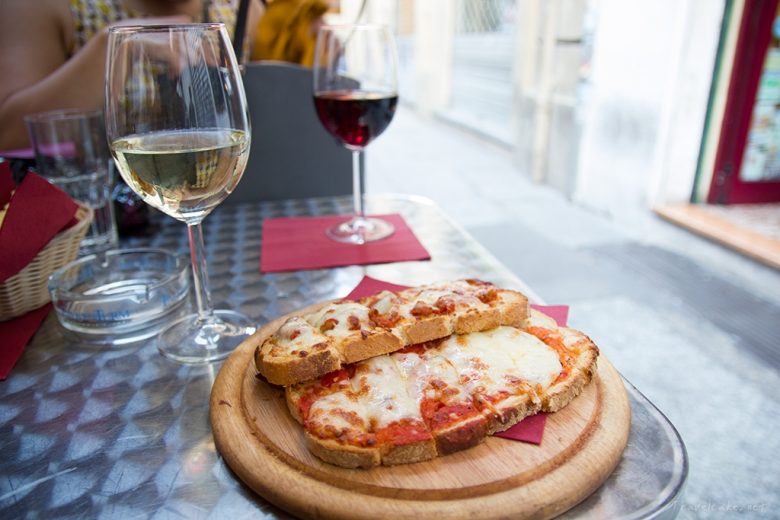
aperitivo at Marsalino Fresh produce
The markets simply impressed me. With fruits and vegetables looking so vibrant and smelling so fresh, all I wanted to do was to cook. The market inspired me to create… Not only dishes, but just about anything. If I lived here, I would never set foot in a supermarket. At least not for produce.
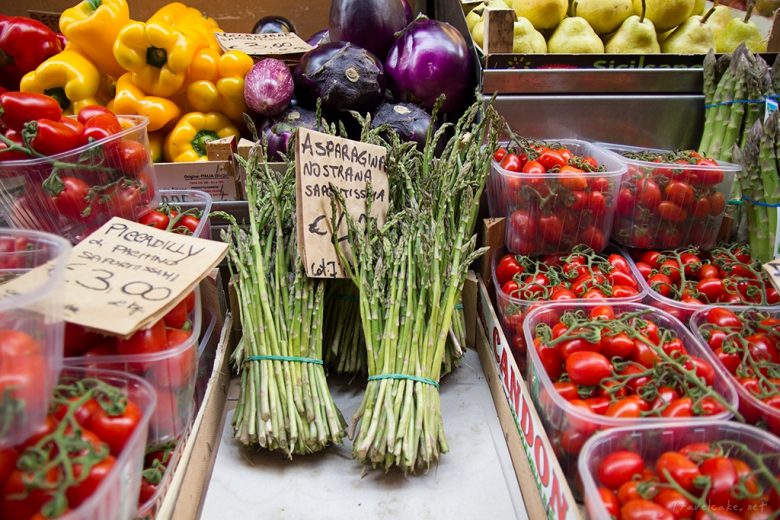
at the market 
learning Italian vocabulary There are so many other foods typical of the region that I have yet to taste. I like to think it’s a reason to go back.
Have you eaten in Italy? What is your favourite Italian dish?
The post “Bologna la grassa, a foodie’s paradise” first appeared on Travel Cake.
-
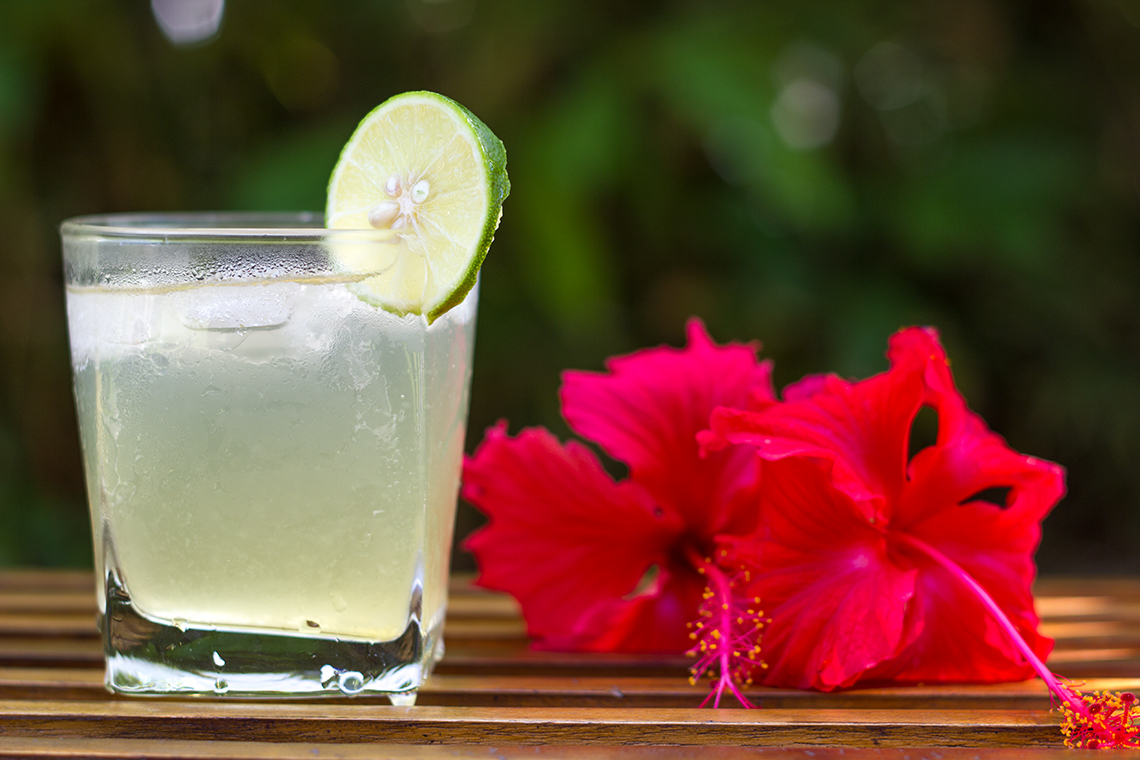
Canchánchara: Cuban Cocktail Recipe
The canchánchara… My favourite cocktail, born in the colonial town of Trinidad in Cuba. Spend a day in the old town and let it transport you to another era. An era of cobbled streets, horse drawn carriages and grand 19th century Spanish mansions. Add some slightly ‘rum intoxicated’ mulattos swinging their hips to the rhythmic conga beats in the sweltering late afternoon heat and you’ve got yourself the perfect Cuban cliché, which quite truthfully, isn’t too far off from reality.
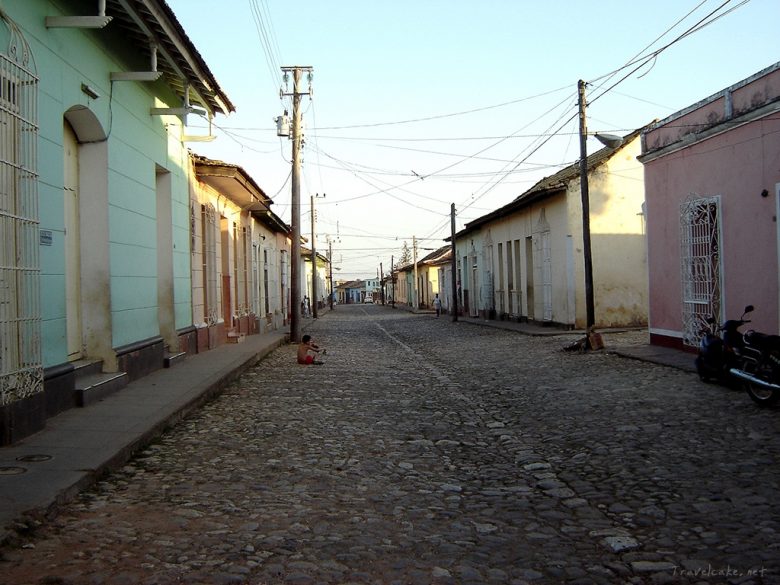
cobbled streets of Trinidad I’m not planning to go back to Cuba any time soon, but I’m craving a taste of that Cuban passion and fierceness. So today, I’m putting some salsa music on full blast and making my “go-to cocktail”. It’s a fast and easy recipe. Care to join me?
WHAT YOU’LL NEED (makes 1 glass)
- 5 cl Rum
- 1.5 cl lime (approx. juice of 1 lime)
- 1.5 cl honey (approx. 1 Tablespoon)
- a handful of crushed ice
- soda water to top off
The original recipe calls for raw rum (aguardiente), but white rum will do. If you prefer your cocktail more sweet or sour, adjust the lime-honey ratio.
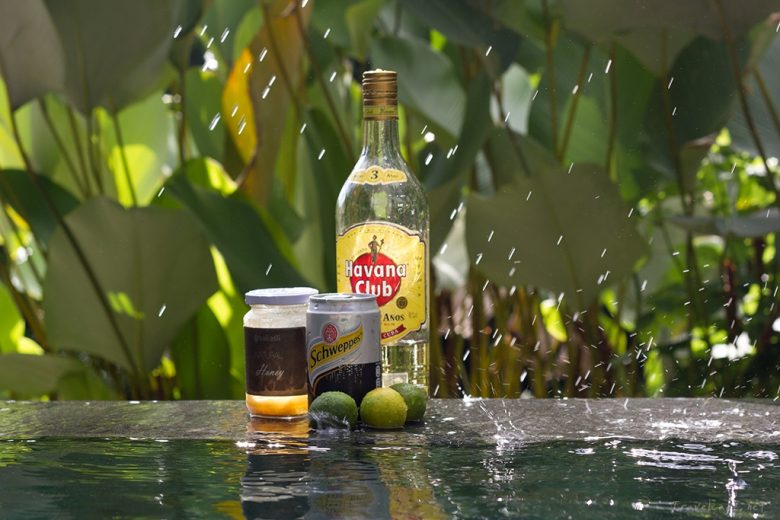
ingredients PREPARATION
- Mix the lime and the honey in a glass until the honey is completely dissolved.
- Add your shot of rum
- Fill the glass with (crushed) ice
- Top off with a dash of sparkling water
TIP: If you’re making cocktails for several people, make a batch of honey-lime mix ahead of time and keep it in a bottle or container. This way you can top up your guests drinks more easily: pour some of the mixture into your guests glass and just add rum, ice and water, saves you a lot of time.
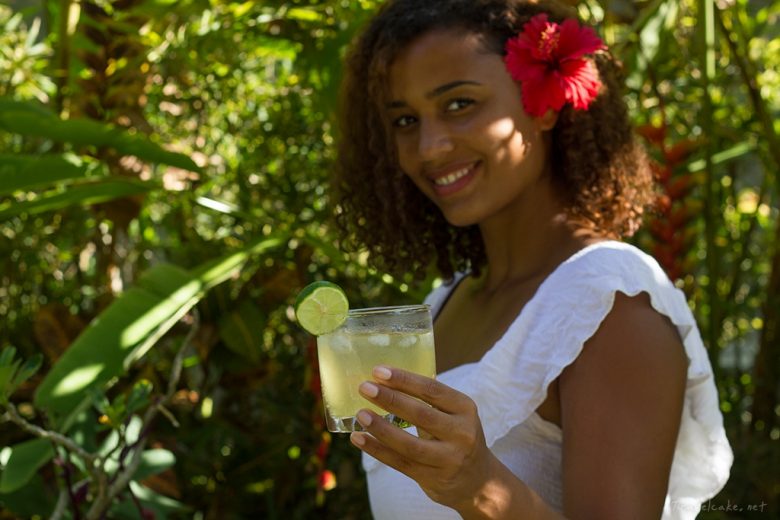
Salud! There you have it, a delicious canchánchara for a passionate Friday evening! ¡Salud!
A special toast to my father’s birthday!
What is your favourite cocktail?
The post “Canchánchara: Cuban Cocktail Recipe” first appeared on Travel Cake.
